
I’ve known Larry Brinker since I was transferred into Buick Studio in 1974. We worked together in Buick and rode motorcycles together in Michigan. He took over modeling responsibilities on several extra-circular Buick promotional car projects that I became involved in through Herb Fishel. After he left GM, we visit Larry and his family in California several times. In 1999 he became involved in the Holls/Bugatti project and took care of the modeling and scanning responsibilities. Larry is a tremendous sculpturing and design talent and can interpret any designer’s concept and turn it into professionally resolved forms. In other words, he saves designers and makes us look good. He has been a good friend over the years, and it gives me a lot of pleasure to present this brief overview of is professional career.—Gary, Dean’s Garage
1968–1980 GM Design Staff
“I was assigned to Buick Studio for most of my time at GM. Studio Chiefs included Don Lasky, Ed Taylor, Bill Porter, and finally Jerry Hirschberg.
During my time at GM Design Staff, I was very involved in motorcycles. So was Bill Mitchell. Often when some well-known motorcycle personality would be invited to visit Design Staff, Mitchell would surround himself with other enthusiasts (by way of Dave North) who were knowledgeable and active in some aspect of the sport. I was often invited to join the group, as was Sheldon Payne (See a Mitchell Anecdote on Dean’s Garage).
 Once Evel Knievel brought several of his motorcycles and other vehicles and set up a display in the courtyard (Evel toured the studios leaning on a black cane that doubled as a decanter—Gary). I was asked to join the group at a dinner later at a country club that Mitchell must have belonged. There was a special room set aside for the occasion that included a bar in one corner. At the end of the dinner there was a check delivered. A pissing contest ensued involving Mr. Mitchell and Evel Knievel as to who was going to pick up the check. Mr. Knievel’s Bodyguard/Mechanic suddenly put a briefcase on the table. When it was opened it was full of money. Even Mr. Mitchell was surprised. I believe that he was able to gracefully add the tab to his account and win the contest. Those were exciting times in the world of Automotive Design.
Once Evel Knievel brought several of his motorcycles and other vehicles and set up a display in the courtyard (Evel toured the studios leaning on a black cane that doubled as a decanter—Gary). I was asked to join the group at a dinner later at a country club that Mitchell must have belonged. There was a special room set aside for the occasion that included a bar in one corner. At the end of the dinner there was a check delivered. A pissing contest ensued involving Mr. Mitchell and Evel Knievel as to who was going to pick up the check. Mr. Knievel’s Bodyguard/Mechanic suddenly put a briefcase on the table. When it was opened it was full of money. Even Mr. Mitchell was surprised. I believe that he was able to gracefully add the tab to his account and win the contest. Those were exciting times in the world of Automotive Design.
I was assigned to Buick Studio. However, occasionally, and without warning, I would be summoned to gather my tools and meet someone in the hall. It made no difference if I was currently working on what Buick considered an important project. I would be escorted to some secret location inside the complex of GM Design, or across 12 Mile Road to the warehouse where older show cars were stored. I know this because I would lift car covers and take a peek. The Buick “Y-Job” and other GM show cars from days past were there.

There was a clay oven and enough other materials to model on a motorcycle. This was accompanied with drawings and renderings of what was wanted. I’m not sure how this all happened, but I enjoyed the opportunity to work on something other than cars.
 I remember that one of the first projects I worked on was a BMW. At that time all the motorcycles that I had seen had basically three separate forms making up the rear fender, seat and tank. The design that I executed integrated all those parts into one continuous form. I don’t know who got the credit for starting that movement (which continues today), but Mitchell was definitely involved.
I remember that one of the first projects I worked on was a BMW. At that time all the motorcycles that I had seen had basically three separate forms making up the rear fender, seat and tank. The design that I executed integrated all those parts into one continuous form. I don’t know who got the credit for starting that movement (which continues today), but Mitchell was definitely involved.
All in all my feelings about Bill Mitchell were and still are that in spite of the craziness (and maybe partly because of it) he took automotive design further down the road and further away from engineering than any of his predecessors. This made Design Staff a separate entity within GM.
Later when I joined Nissan I experienced firsthand the transformation of design control moving from engineering to styling.”
William L Mitchell Design

“I worked for Bill Mitchell after he retired as Vice President of General Motors Design Staff in 1978. Mitchell created William L Mitchell Design that was located in a tall, prominent building in Birmingham. Very first class.
Mitchell Design’s clay modeling studio had white carpet. Seriously. And he would bring the troops coffee in a sterling silver urn on a sterling silver tray with sugar, cream, and a bottle of booze so you could reinforce your caffeine any way you wanted.
Upon Mitchell’s retirement GM should have provided him with an orientation class on how to re-enter society before he retired, He was unprepared for the real world. For example, Mitchell had troubles pumping his own gas and dealing with airport parking. Air travel and flight scheduling is complex today. Not so in 1978. But it was all new to Mr. Mitchell.”
From GM Design Staff to Nissan Design International (1980–2000)
“One day I got called into Jerry Hirschberg’s office and, in a roundabout way, was told that he had been contacted by a company called Korn Ferry regarding a position with another company. I think that, I don’t remember why, they may have also contacted Wayne Kady. Later it became more obvious what was happening when Jerry left GM to go to Nissan. I wound up getting interviewed in La Jolla, California after Tom Semple and Allen Flowers had also left. Upon my acceptance of Nissan’s job offer, and my resignation at GM, I was also escorted out of GM Styling. Before I left I met with John Bird (head of modeling) in his office. He told me that if things didn’t work out to come back and see him. Maybe he had forgotten his comment about me having a “caustic mouth” on one of my performance reviews. Anyway, it was my safety net!
Nissan was an opportunity not to be missed. I uprooted our family and headed to California, never to look back. I was much more comfortable in NDI’s smaller working environment. Being able to participate in the making of a new, more creative working environment under the leadership of Jerry Hirshberg was quite rewarding.
The first priority at the new NDI was to come up with a working studio. The first project was a redo of their pick-up truck, competing with the studio in Japan on the same project. Surprisingly, both versions were chosen. Theirs for the Eastern market and ours (the Nissan Hard Body) for the U.S. market. Later they dropped theirs and the Hard Body was sold worldwide. Years later I was told in confidence by a Japanese President of NDI, that our design was not the winner. Our Hard Body was built by decree of Mr. Takashi Ishihara, the top guy at Nissan. The same guy who decided that NDI should exist at all. NDI continued to be responsible for all the cars that Nissan built where the primary market was the U.S.

Hirshberg’s leadership was unique and very effective. Often when things got difficult and stressful, He would shut NDI down and we’d all go to the movies. This didn’t remove the stress for the managers, but when everyone returned the next day, we probably were more creative as a result. I believe that Jerry knew that you couldn’t make people be more creative. This flew in the face of the Japanese management style, where everyone just worked longer hours to come up with better designs.
 Unfortunately, I see almost exclusively, variations of the Japanese management style today where design and management risk taking is to be avoided. I didn’t understand this until I retired and worked as a contractor with many of the companies in the industry.
Unfortunately, I see almost exclusively, variations of the Japanese management style today where design and management risk taking is to be avoided. I didn’t understand this until I retired and worked as a contractor with many of the companies in the industry.
It’s too bad that the security involved in automotive design has kept this unique Hirshberg approach a secret and limited its potential contributions.
That’s all water under the bridge now, but after having the experience in retirement of working on many projects in many studios in Southern California, I can now look back and see how lucky I have been. NDI was truly a very special opportunity.”
The Emotions of Form
As a result of working with Professor Robert O’Neil from the Rhode Island School of Design (RISD), I became interested in the “emotional” content of form.
I started having students do exercises that asked them to make small shapes in clay to represent how they felt about different words that I would give them.
At first there seemed to be a lot of variety in their shapes. But after grouping the shaped together for each word it became obvious that there were strong similarities. I continued to do this same exercise, with the same words, whenever there was an opportunity. This included mostly students from different schools. We repeated the exercise at NDI with employees and at the local elementary school.
Results stayed consistent. I wasn’t able to see significant differences, regardless of age, background, sex, culture, ethnicity, or education.
My experiment ended there. I am convinced that there’s more to discover. Our sense of aesthetics could be related to this kind of finding. My hope would be that a more understandable language using form might result. After all, we all have feelings about many things, why not form? There seems to me to be some kind of universal, underlying content that is not yet completely understood. What this understanding might reveal and how it might be used is yet to be seen.
Galleries of Larry’s Work
John Toom’s French Coupe
“John Toom was one of the first employees hired at NDI. He was our Shop Manager. He had extremely good fabricating skills and was very creative. He designed a French Coupe that could have been done in the ’30s, and et about building that car from the ground up. He started the project while still working at NDI and continued after his retirement. The car was almost finished when he became sick from cancer and passed away. John was a close friend and I helped with some of the clay work on the car. John’s French Coupe was purchased and finished by Ron Kellogg. Photos of the finished car (next to Ron’s Bugatti) are from the 2006 Great American Roadster Show.”
Hispano and Bianchi Projects
“Eric add Molly Roseneau asked me to design and create a period Hispano body to be placed on their existing Hispano frame. I created a boat-tail 1/4-scale design that was scaled up to full size and built in metal. It was shown at Pebble Beach. After having created a body for the Hispano, I was contacted to do another very similar project on a Bianchi. Bill Evans had a chassis without a body and wished to add a body which would resemble an early version that Bianchi had used but no longer existed. Everything that was done was very authentic and the car was also shown at Pebble Beach.”
ICON Aircraft Project
“The ICON aircraft project came through Aria where I did a full-scale clay. After which I worked directly for Icon at their studio in Los Angeles and their engineering/development facility in Tehachapi, CA. ICON had the most creative environment I’ve experienced since working for Jerry Hirschberg during my years at NDI.”
Dave Holls/Ron Kellogg’s Bugatti Type 57/59 Roadster Special
This is a complicated tale of the creation of a Bugatti that involved Dave Holls, Gray Counts, Bob Shaw, Chuck Rahn, Ron Kellogg, Larry Brinker, myself. The story of this car is told in detail in another Dean’s Garage post.—Gary, Dean’s Garage
VOR Project
“In the late 1990s VOR, an Italian motorcycle manufacturer, exported a few motorcycles to the U.S., distributed through a company in Las Vegas. In the early 2000s VOR’s Maurizio Virtuani wanted to establish their own U.S. distribution, located in Poway, California. Rex Marsee contacted me regarding a design project to expand VOR’s lineup to include street bikes. The design team include Rex, Maurizio, John Cupit, and myself.
The objective was to create a lightweight street bike using as many existing parts as possible. Unfortunately by the time we had a prototype, the project was abandoned. I continued working for VOR as a factory trained mechanic until the distribution was sold to a company in Louisiana when Maurizio died young of cancer. VOR succumbed to mismanagement, Italian politics, untimely death of the Mauricio, and probably a lot of other things that I was unaware of. I enjoyed working with VOR.”
VOR-based Cafe Racer
“Currently I’m working on a VOR-based Cafe Racer.”

Buick Promotional Cars
This is another long story that is explained in detail in other Dean’s Garage posts. Briefly, while I was in Buick Studio, I was contacted by Herb Fishel to develop several promotional Buicks as side projects to be modeled at Diversified Glass. Larry took over the modeling responsibilities. I’m not sure how successful the designs were, but the modeling was class-A professional. See these posts: 1979 Buick Century Roadmaster, and 1980 Buick 80X. —Gary, Dean’s Garage
Over the years Gary and I have had an ongoing relationship. We worked together at GM, and sure did a lot of camping and motorcycling together. So much that he sort of became part of our family and our family became a part of his. Our family attended his wedding, and our relationship continued after we moved to San Diego and he left GM and moved to Prescott, AZ. He has always been a part of what I was doing and I have often been a part of his adventures in design. I hope that my remembrances here will be interesting enough to promote his Deans Garage Website, and be looked at as more than just nostalgia of the past. I appreciate the opportunity. Thank you, Gary.
Biography
Education
1962–1967: John Herron School of Art, BFA, Sculpture,
1967: University of New Mexico Graduate School
1961–1962: Ball State Teachers College, Industrial Arts; Art
Experience
1980–2000: General Manager of Modeling at Nissan Design America
Founding member of Nissan Design International, responsible for all phases of the Modelmaking Discipline, including Nissan Concept Car Development, project management, resourcing, and quotes. Represented the Modelmaking interests of Nissan Design International in Europe and Japan.
1980–present: Motion-Research (owner), Product Development, consulting, contract work
C-H Styling, Beijing China; Geely Motors, Chang Feng, China; Aria Group, CA; Socal Speed Shop, CA; Nissan Design, CA; Mitsubishi, CA; Hyundai, CA; Mazda, CA; Suzuki, CA; General Motors, CA; KIA, CA; V-Vehicle, CA; Isuzu, CA; Icon Aircraft, CA
2004–present: Marsee Design, Product Research and Development
1968–1980: Senior Design Sculptor at General Motors Design Staff (Worked in all exterior studios and on Mr. Bill Michell’s personal motorcycle projects.)
Academia
Pioneered the Evolution of the Design Process, the Emotional Content of Form, and the Philosophy of Design
Lectured at the Rhode Island School of Design, The Harvard Business School Graduate Department, The University of California San Diego, The Academy of Art University San Francisco and the Savannah School of Art and Design
Faculty member of Rhode Island School of Design, the Academy of Art University in San Francisco, teaching in San Francisco, Providence, Rhode Island, and Milan, Italy.

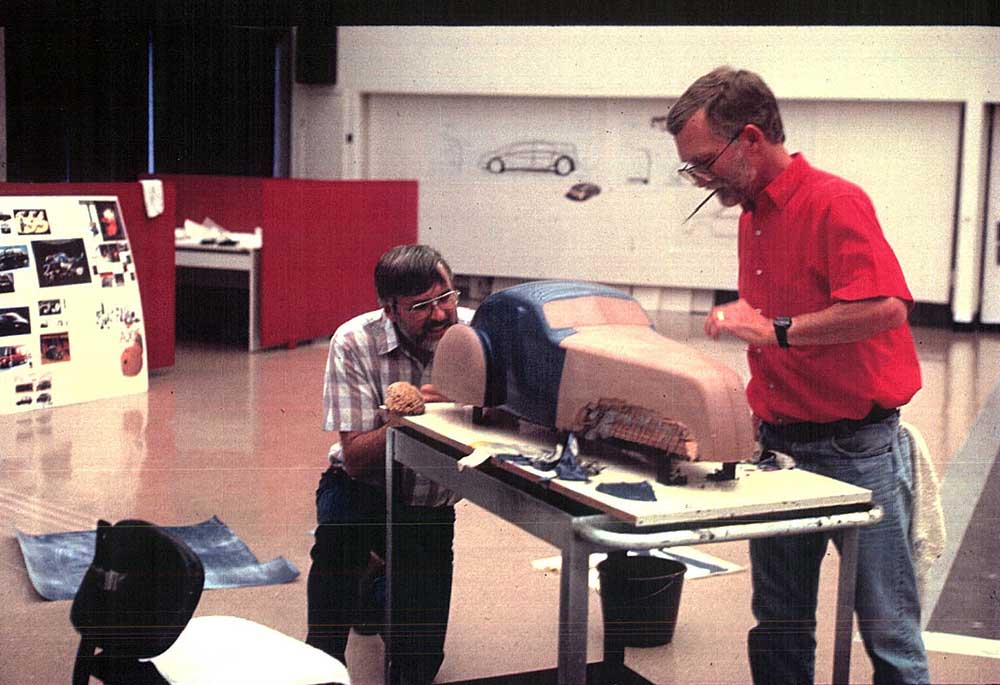
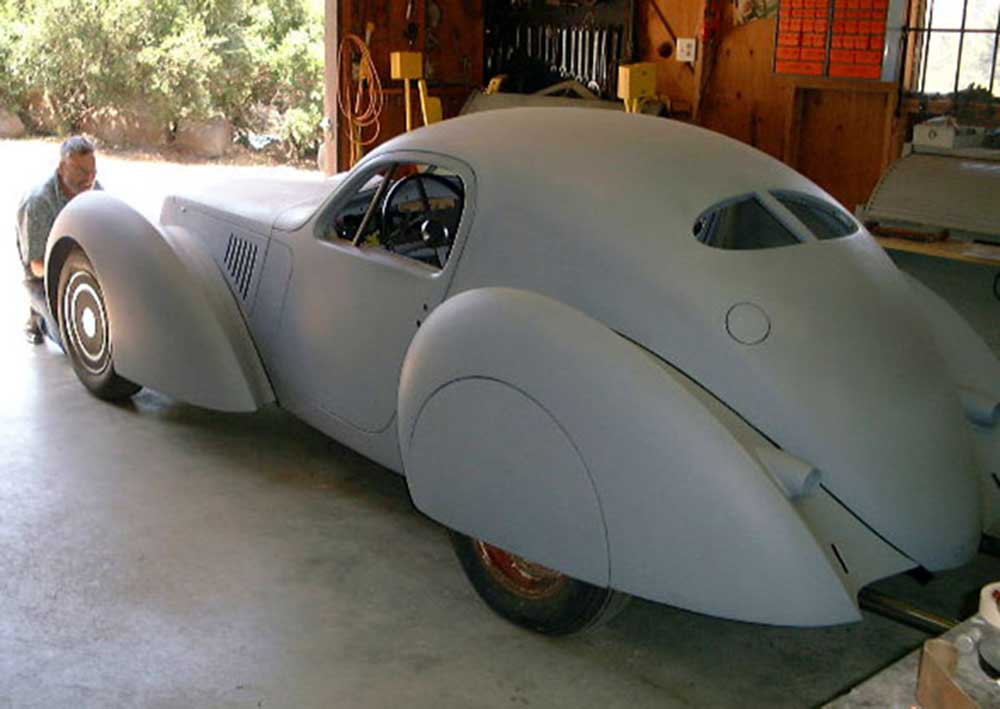
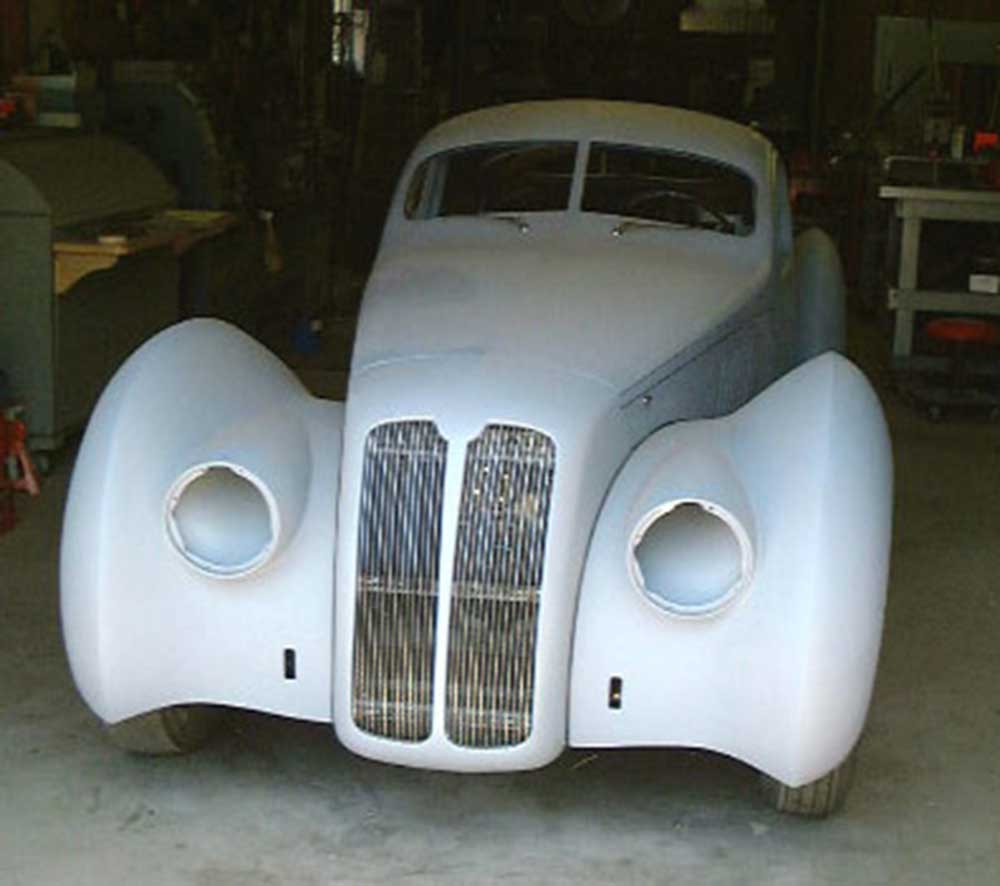
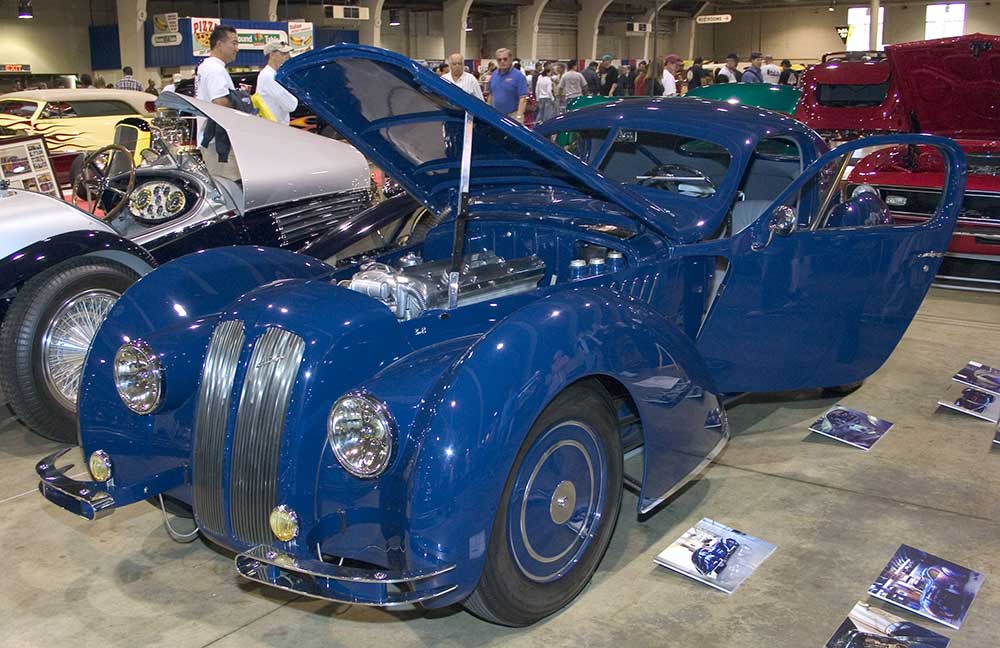
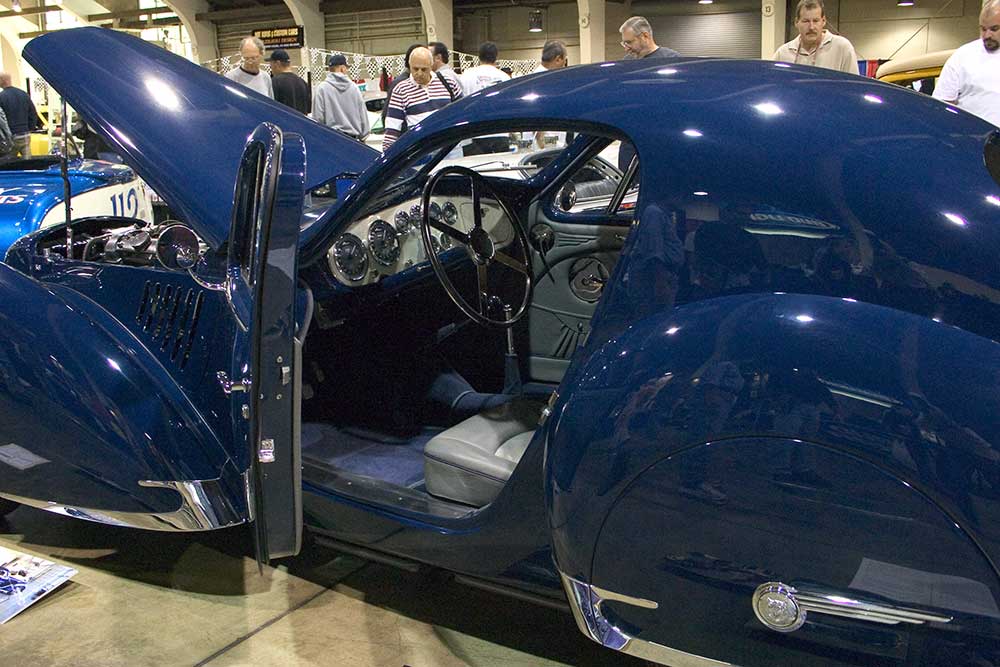
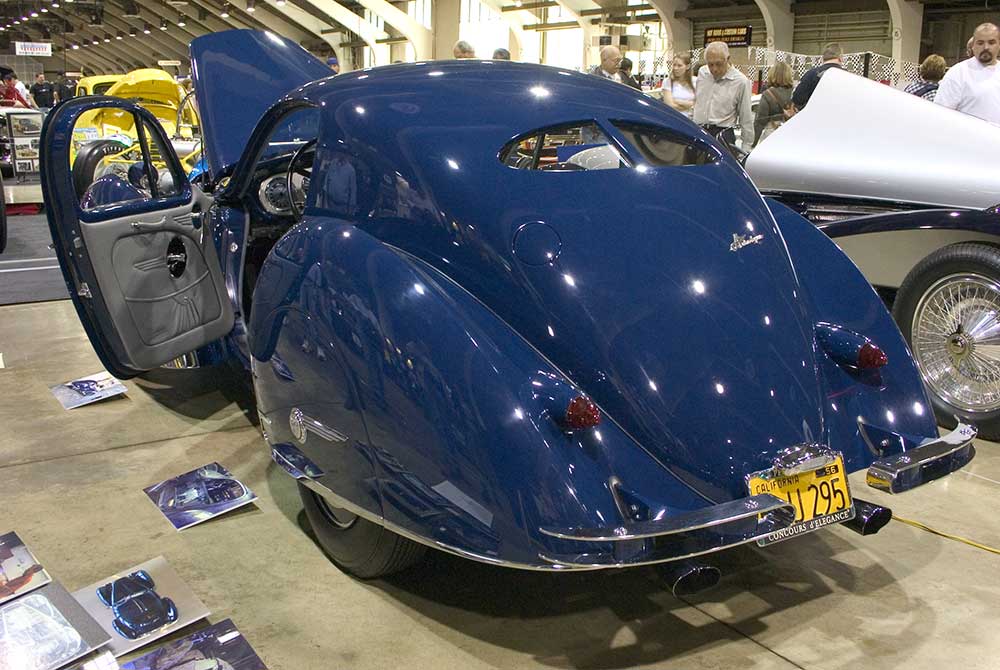
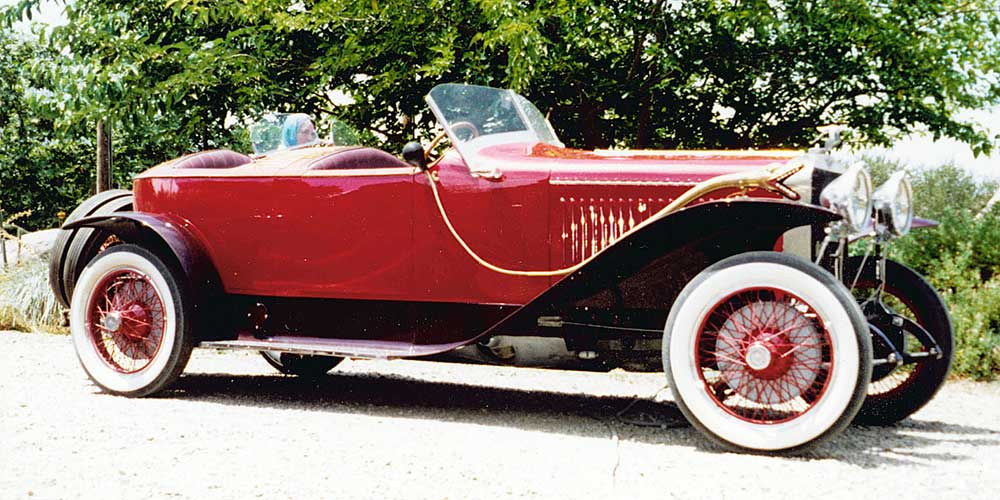
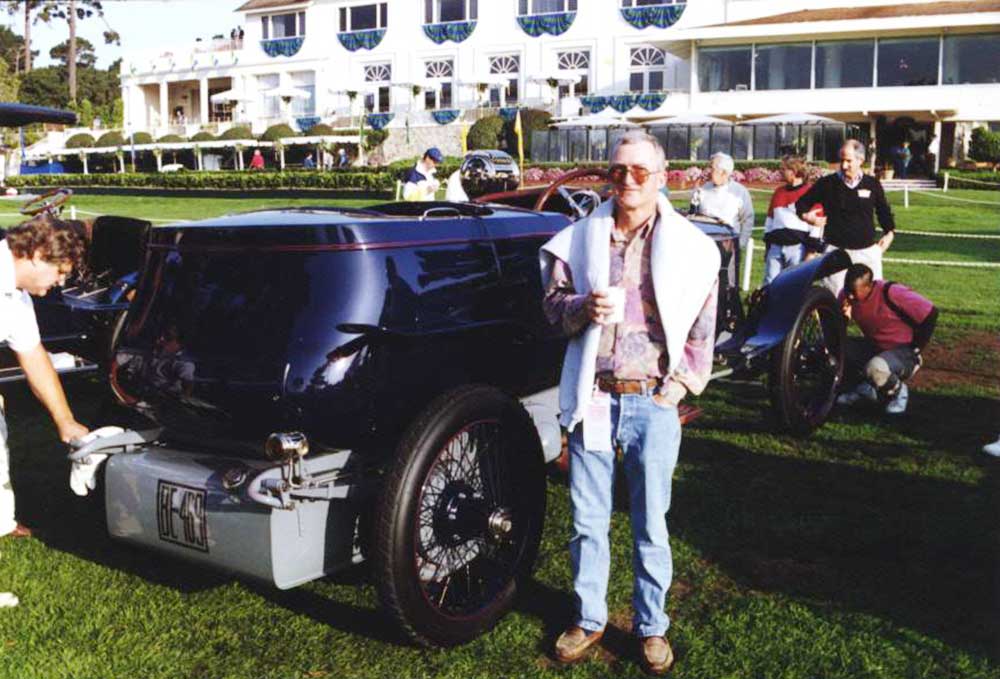
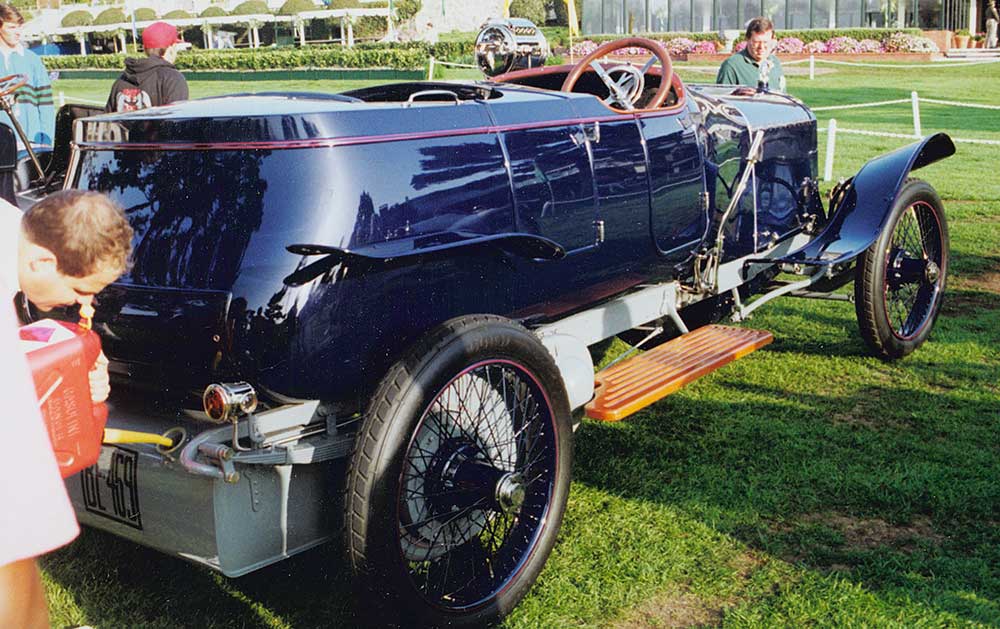
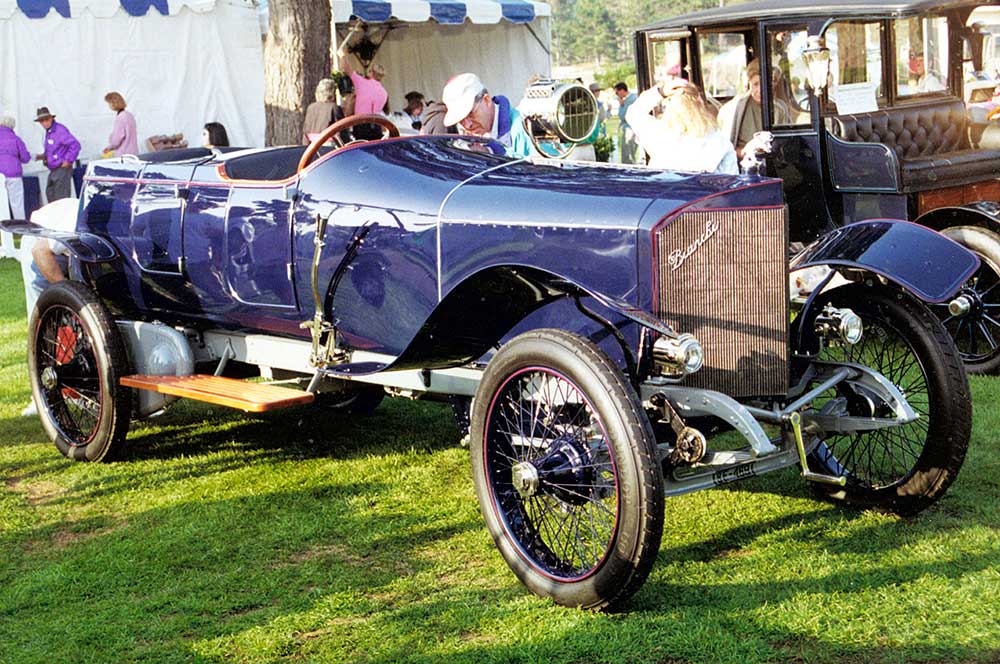
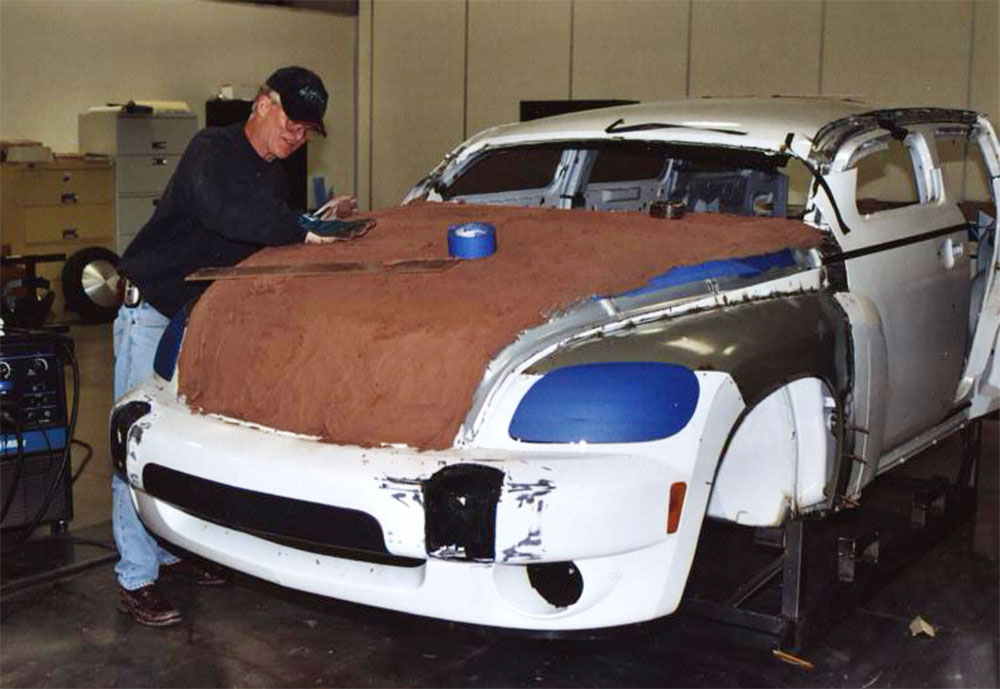
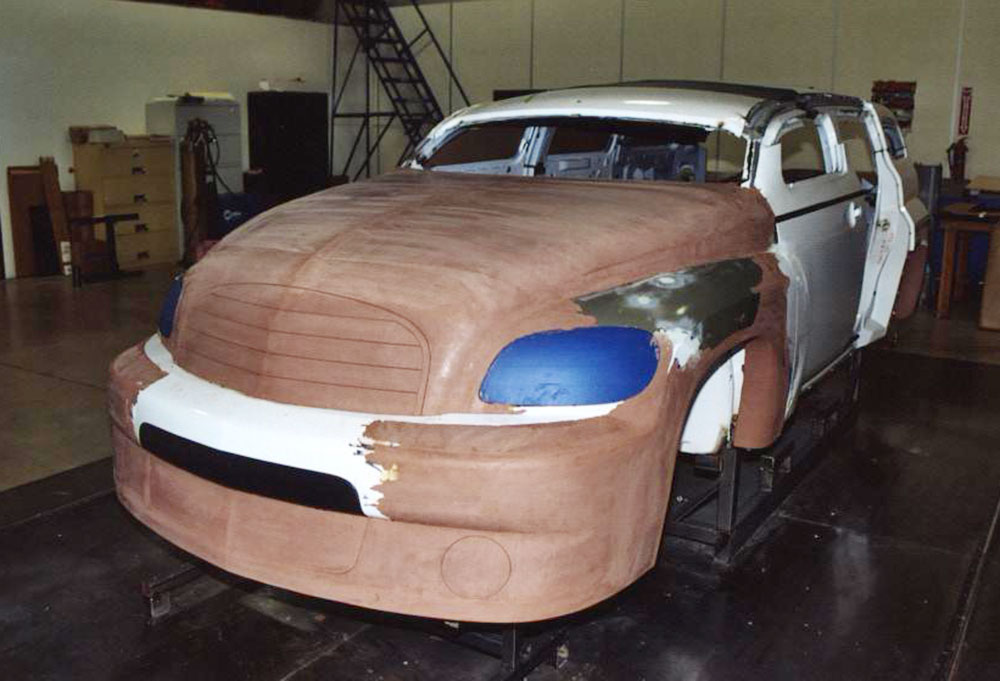
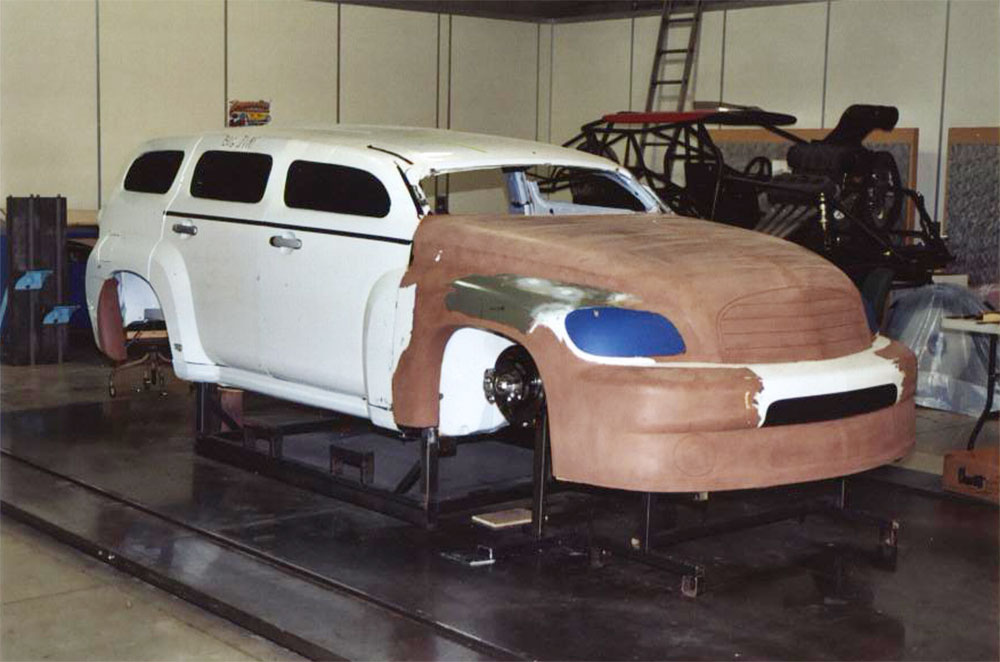
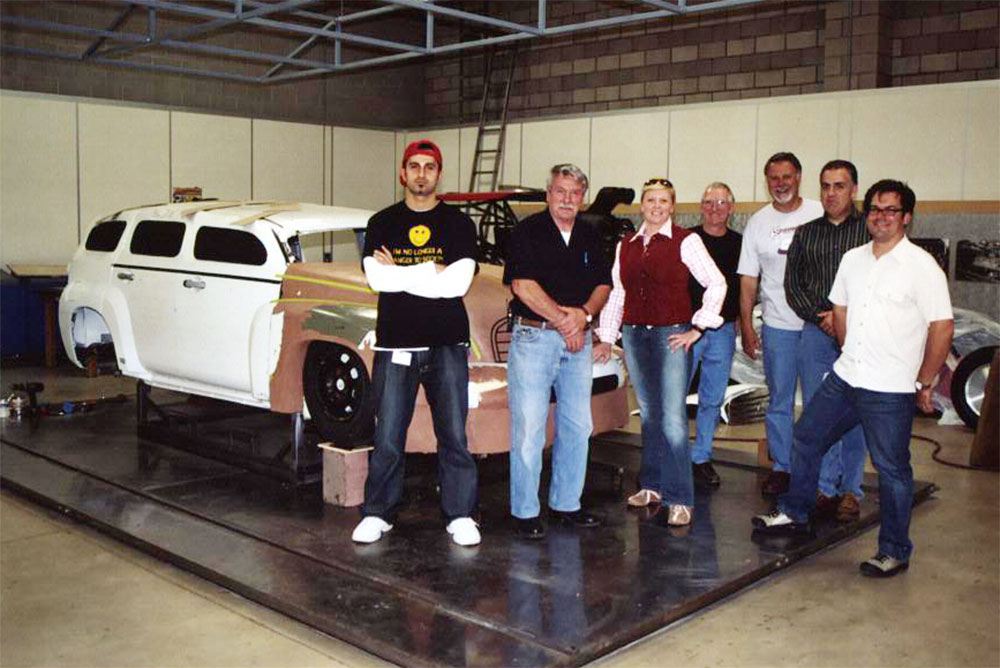
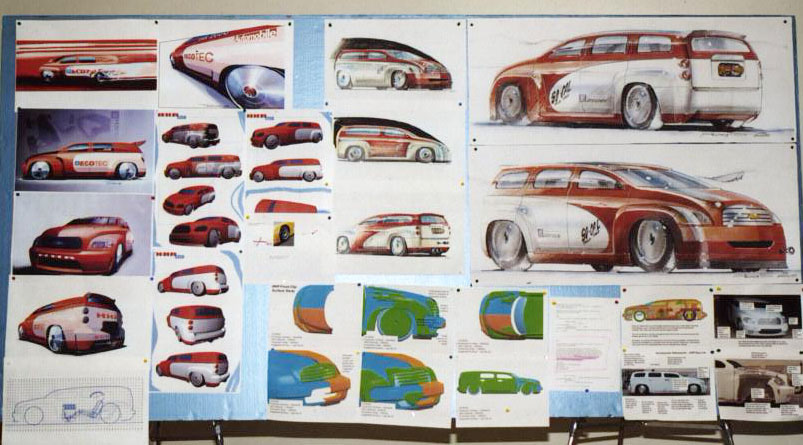
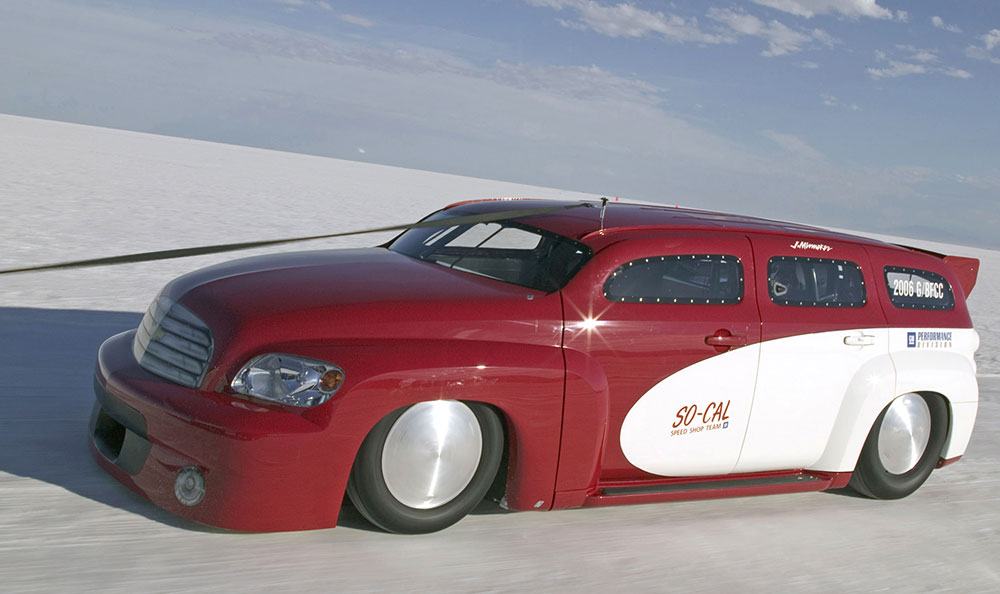
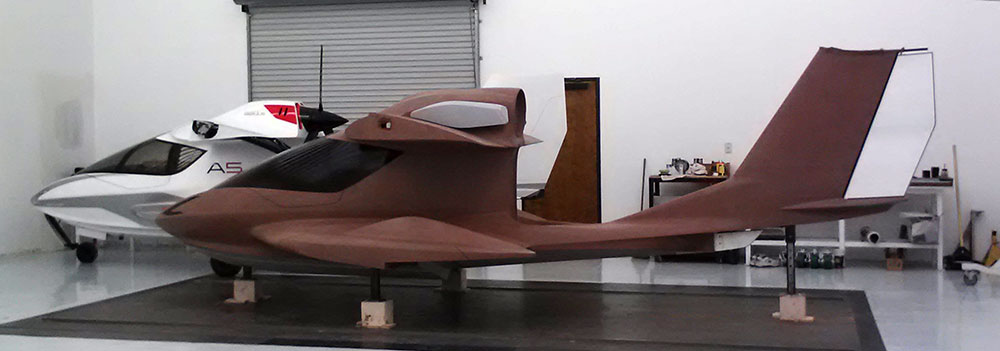
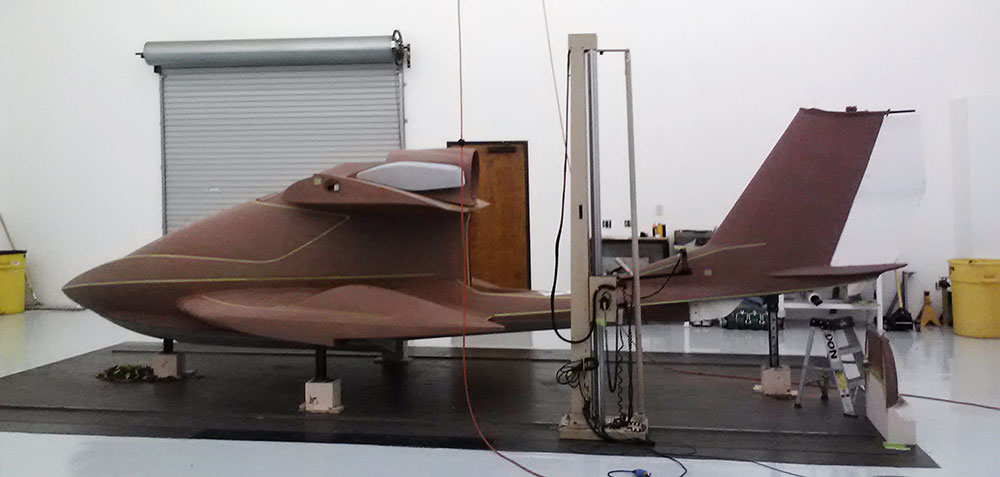
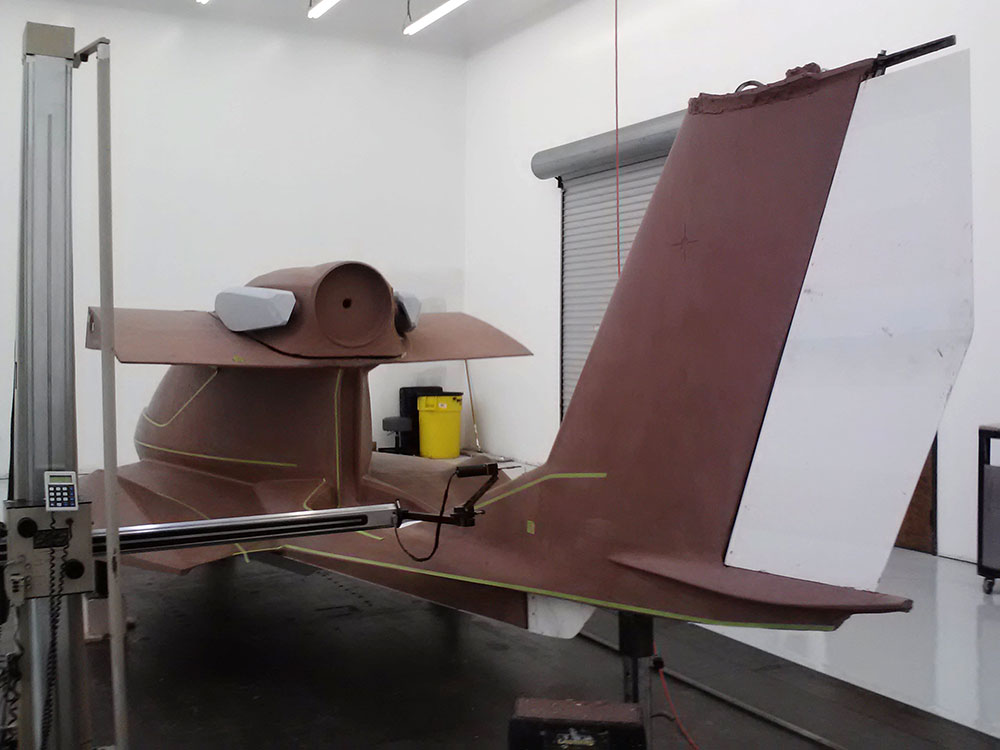
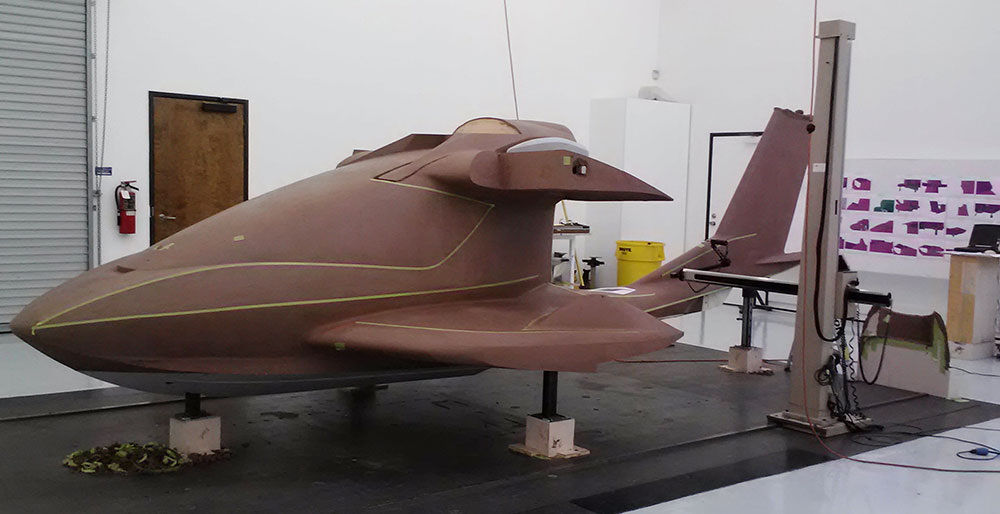
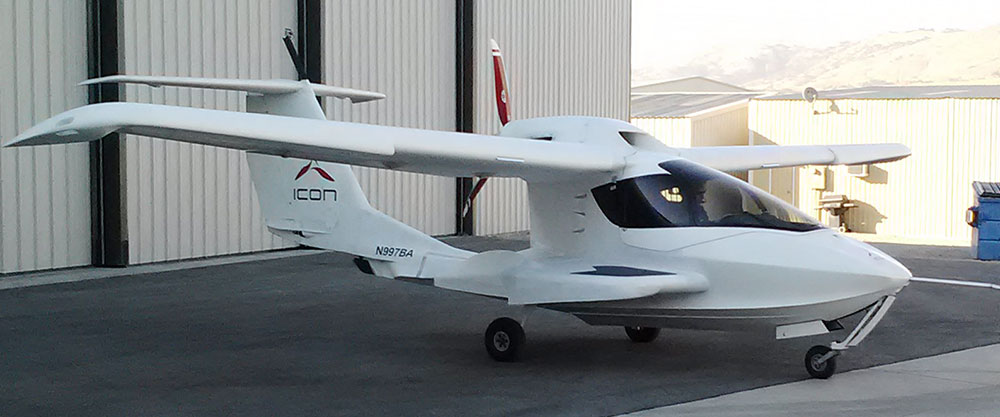
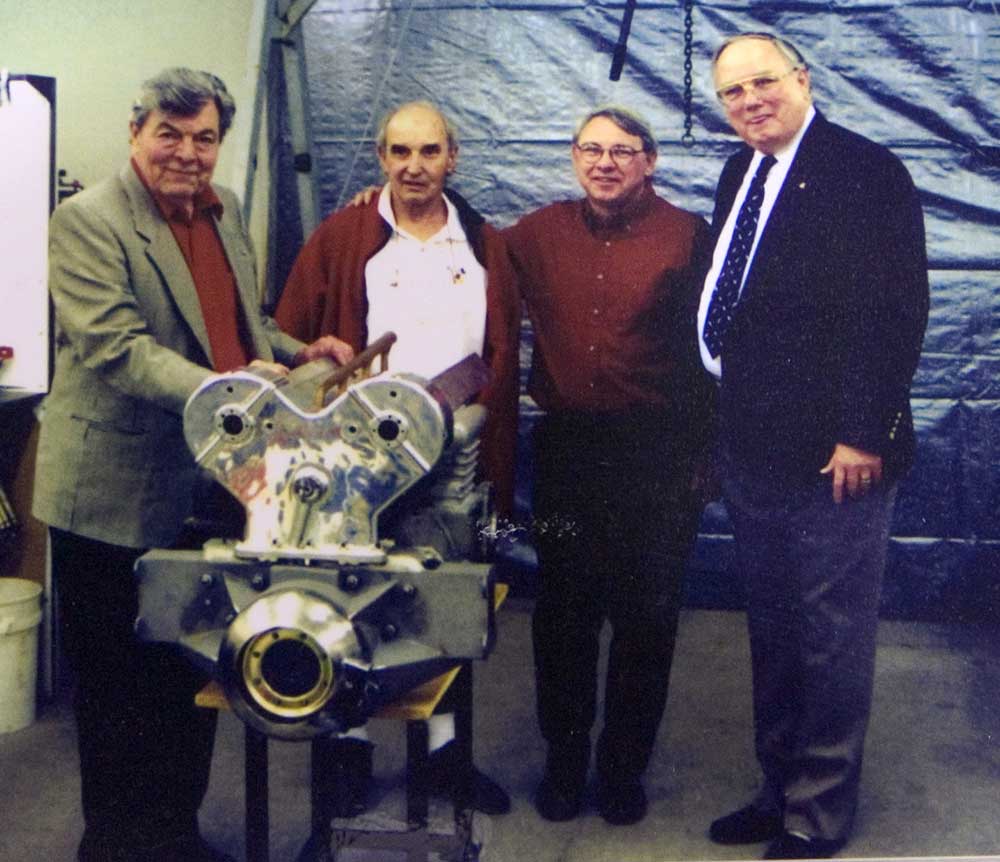
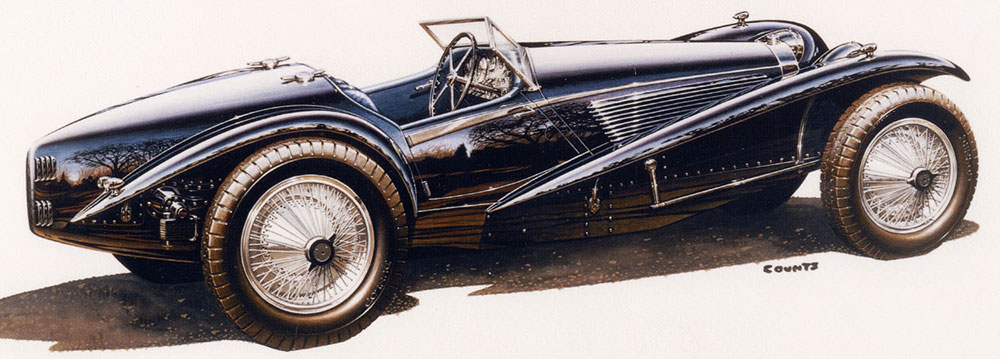
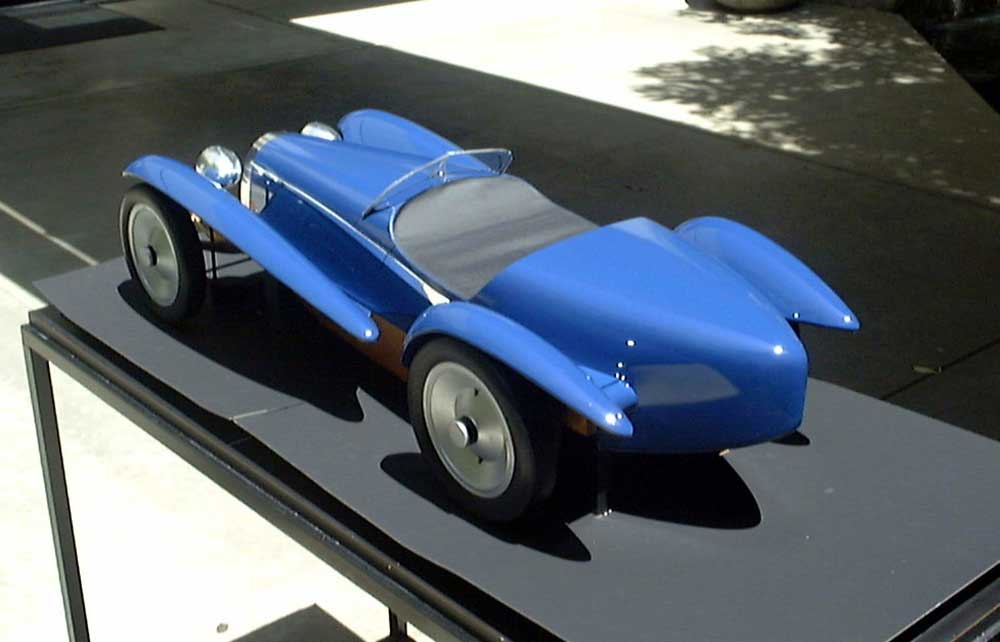
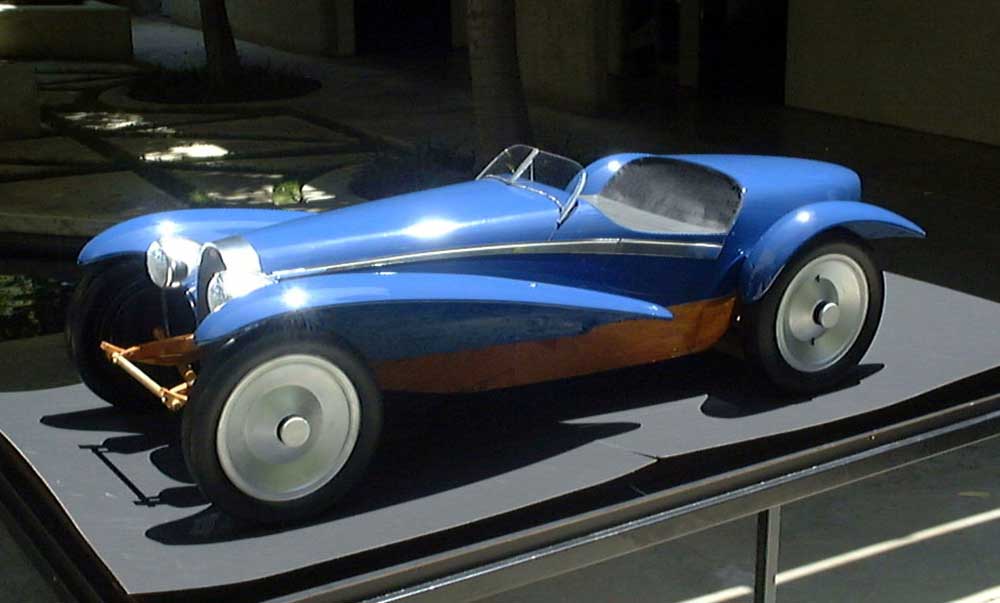
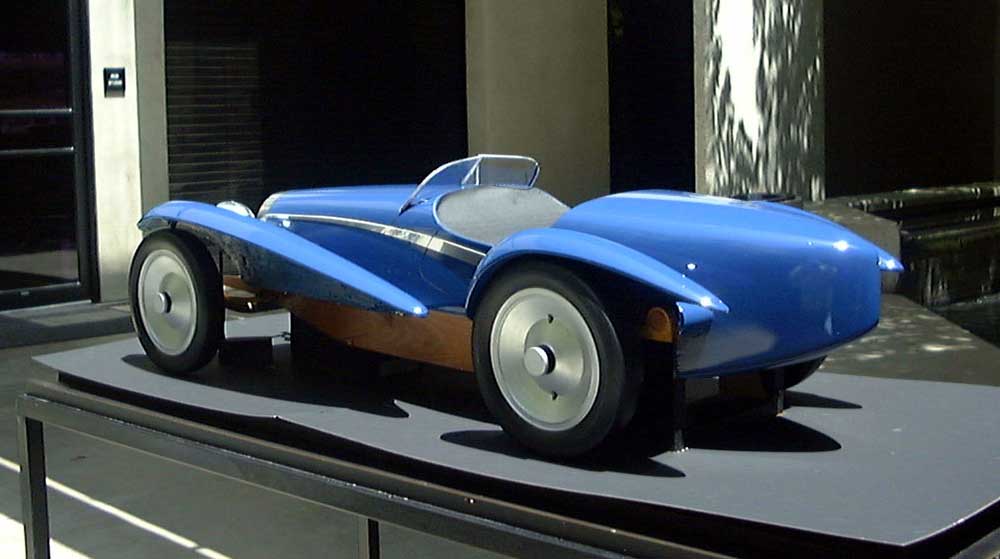
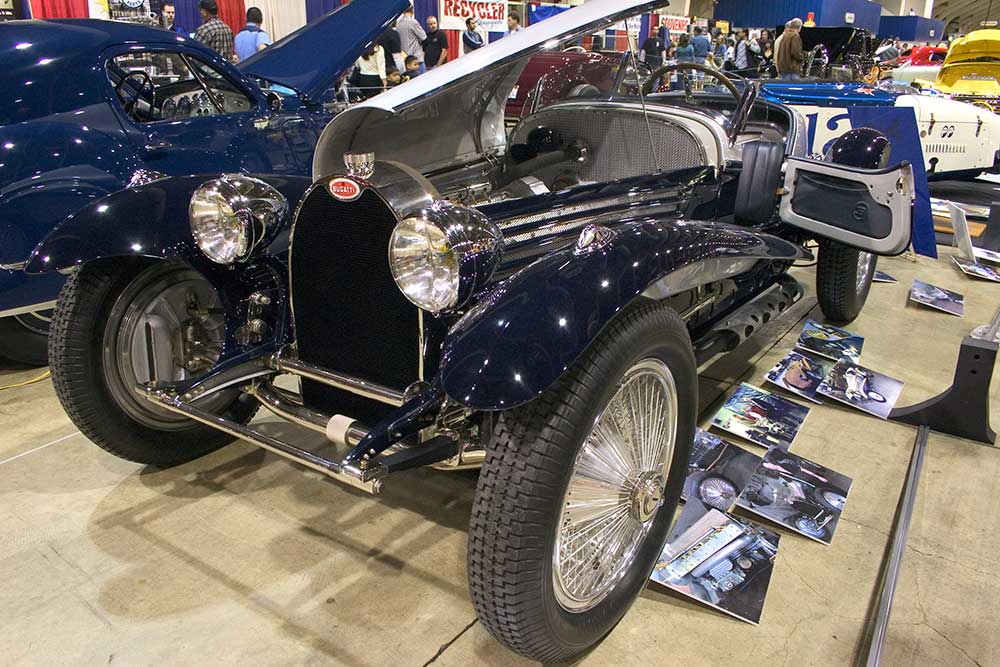
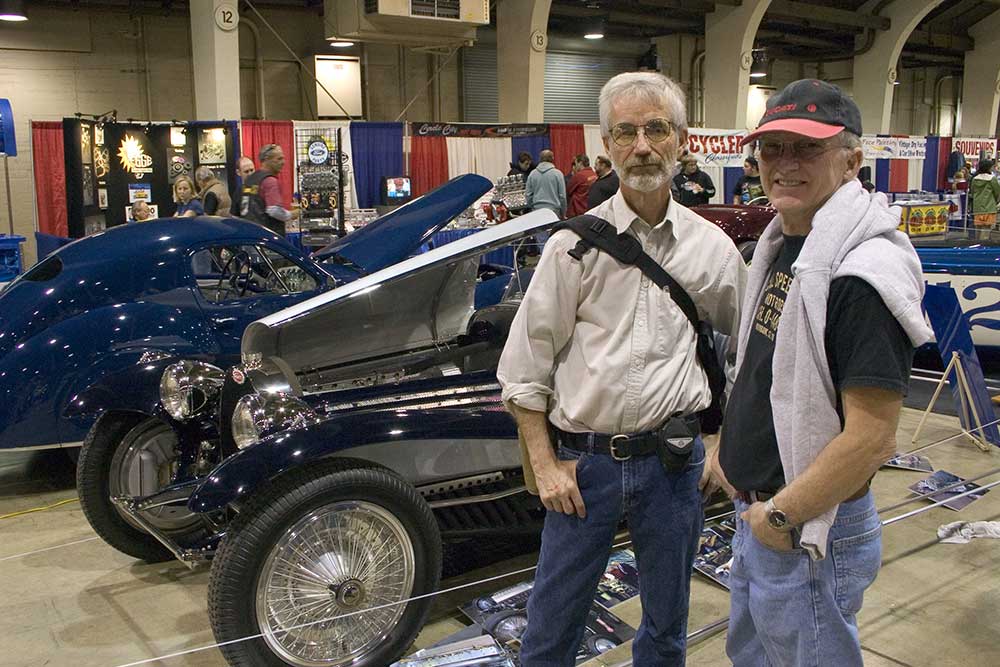
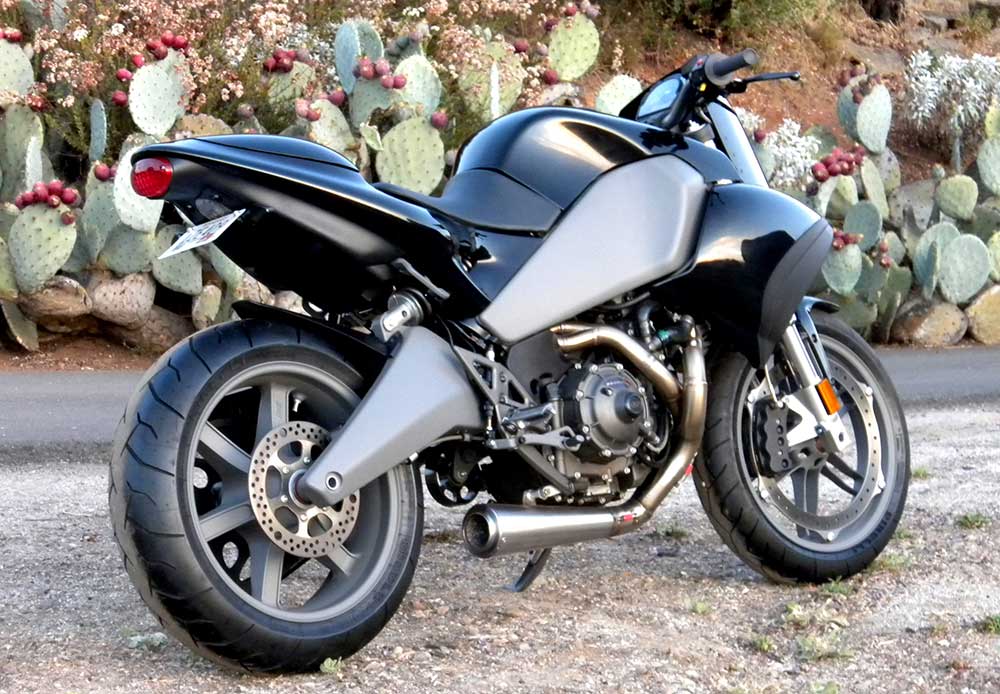
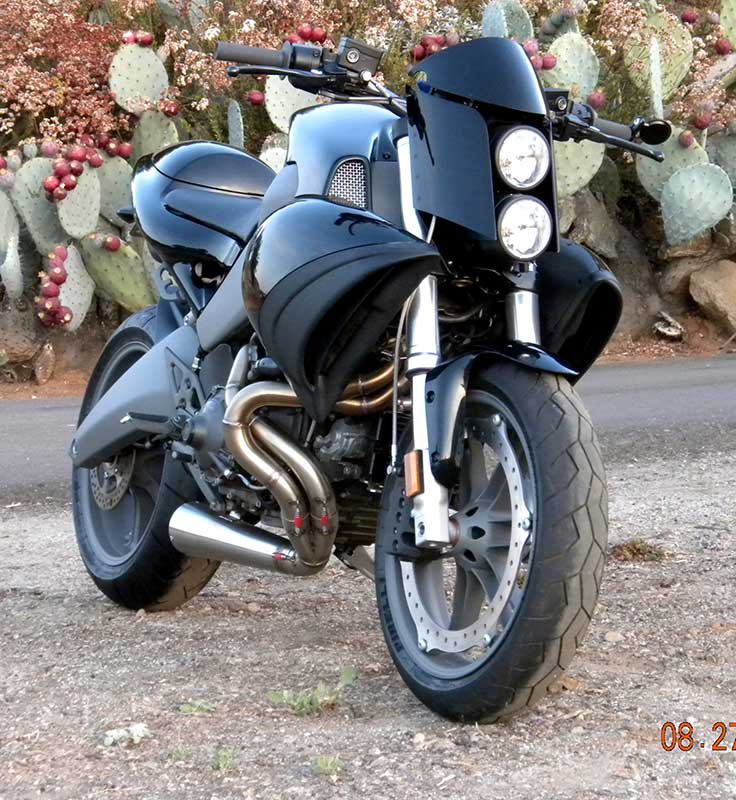
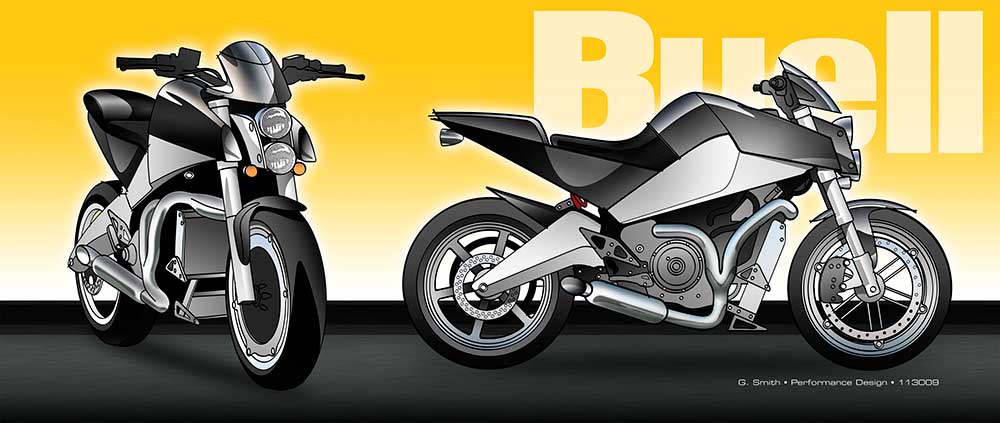
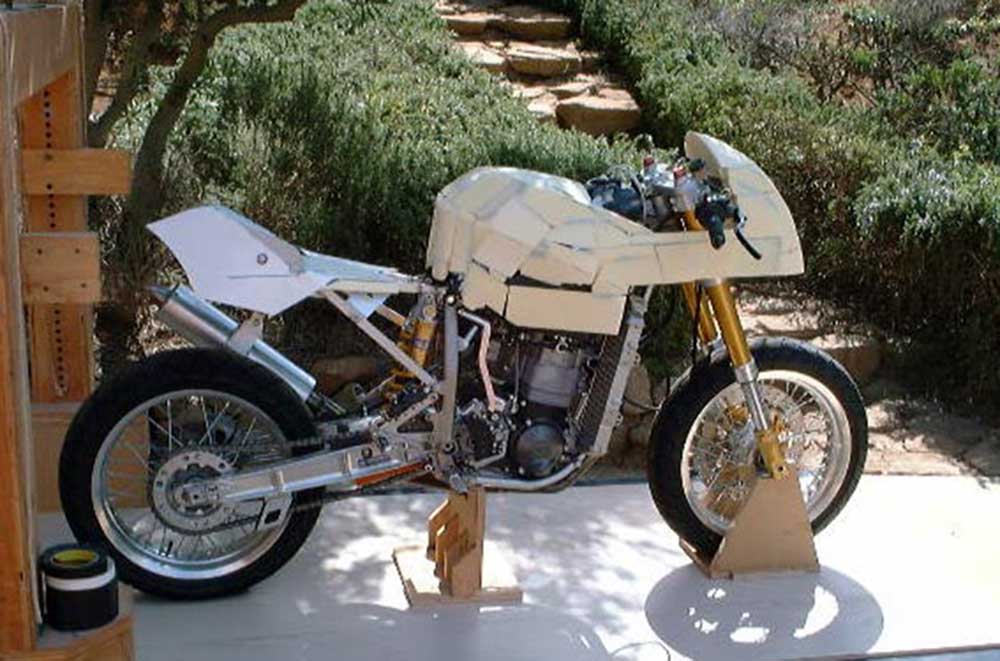
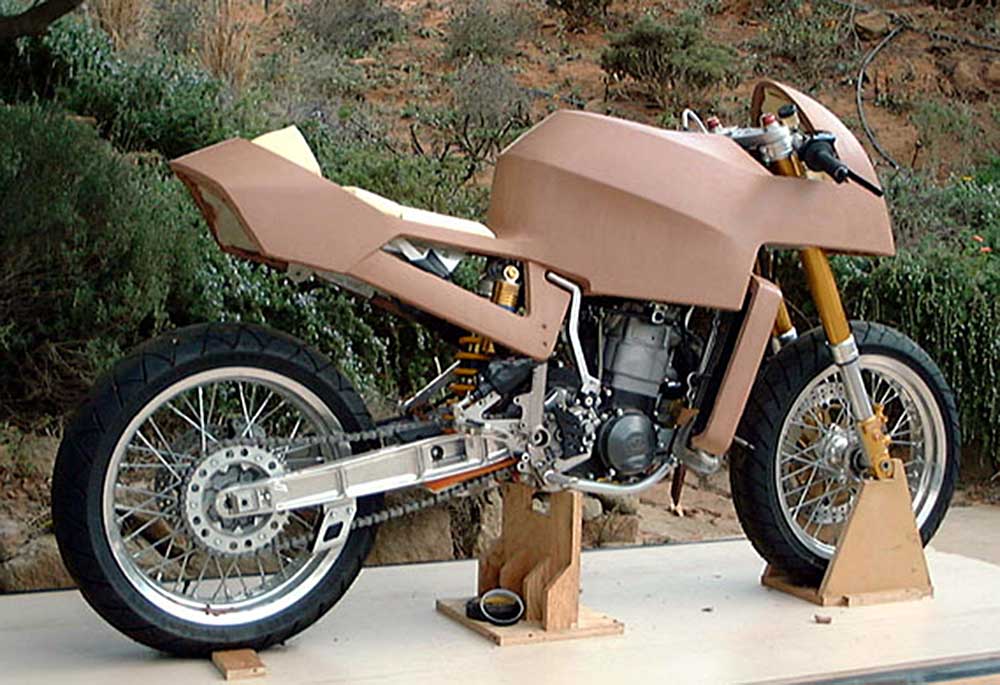
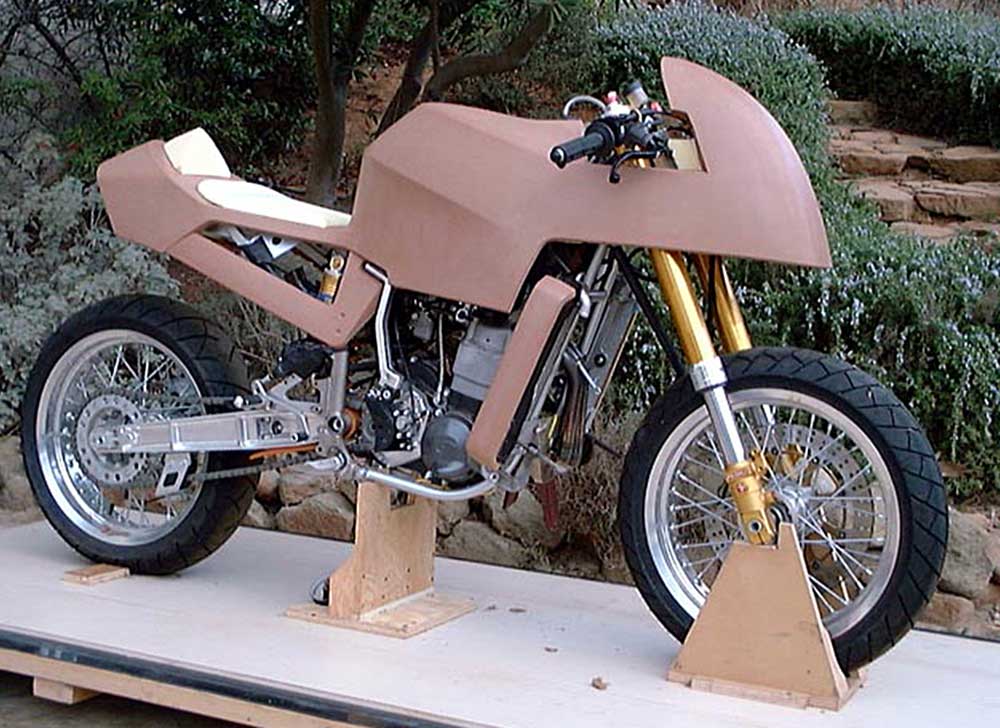
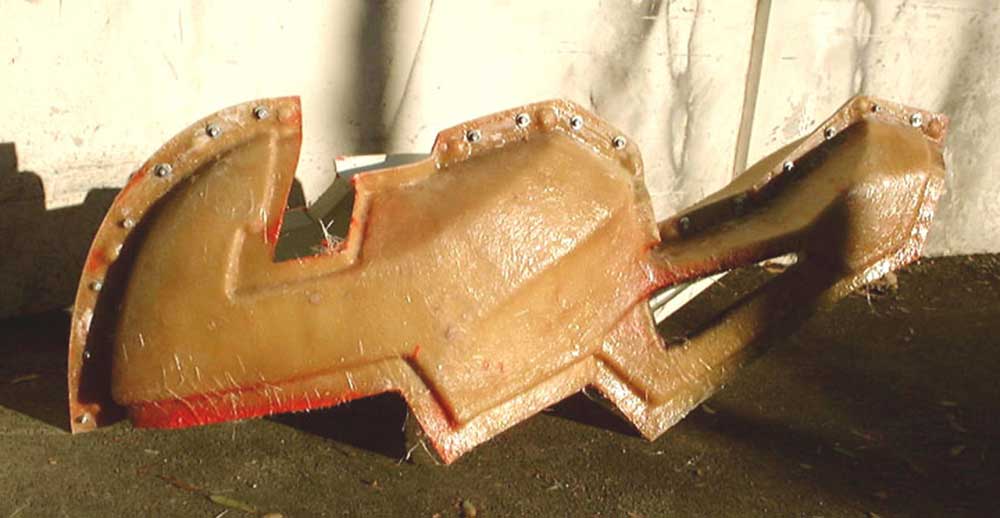
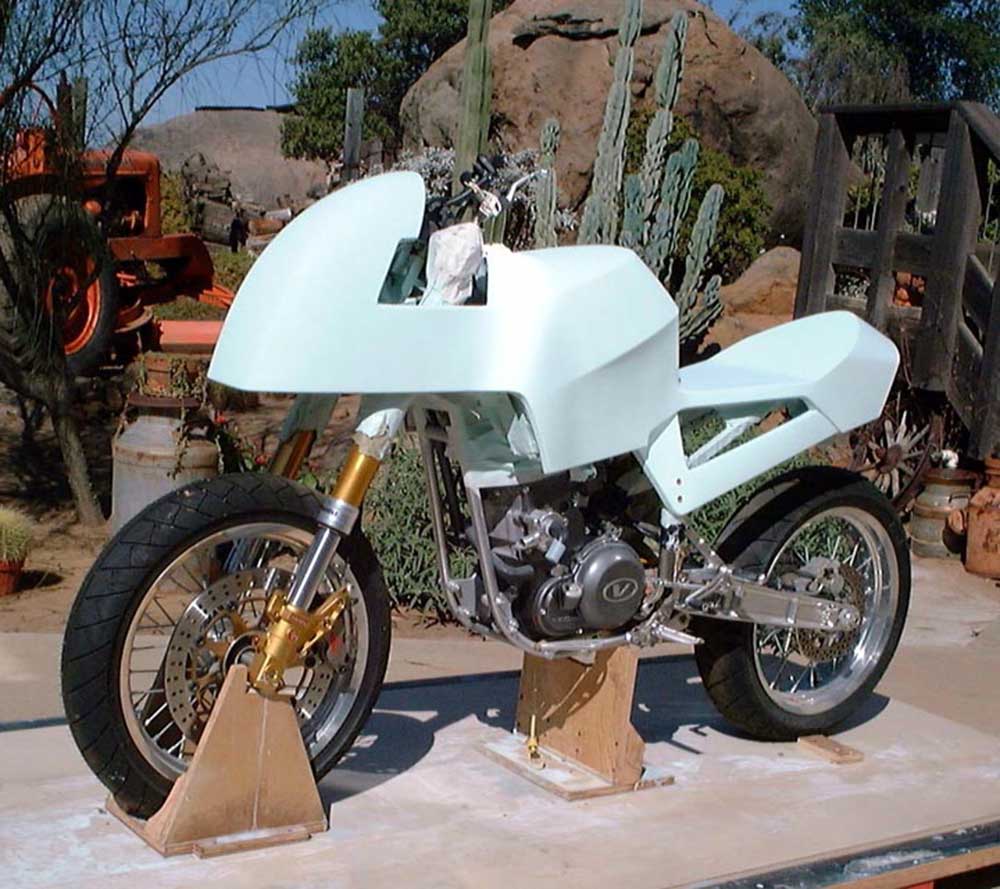
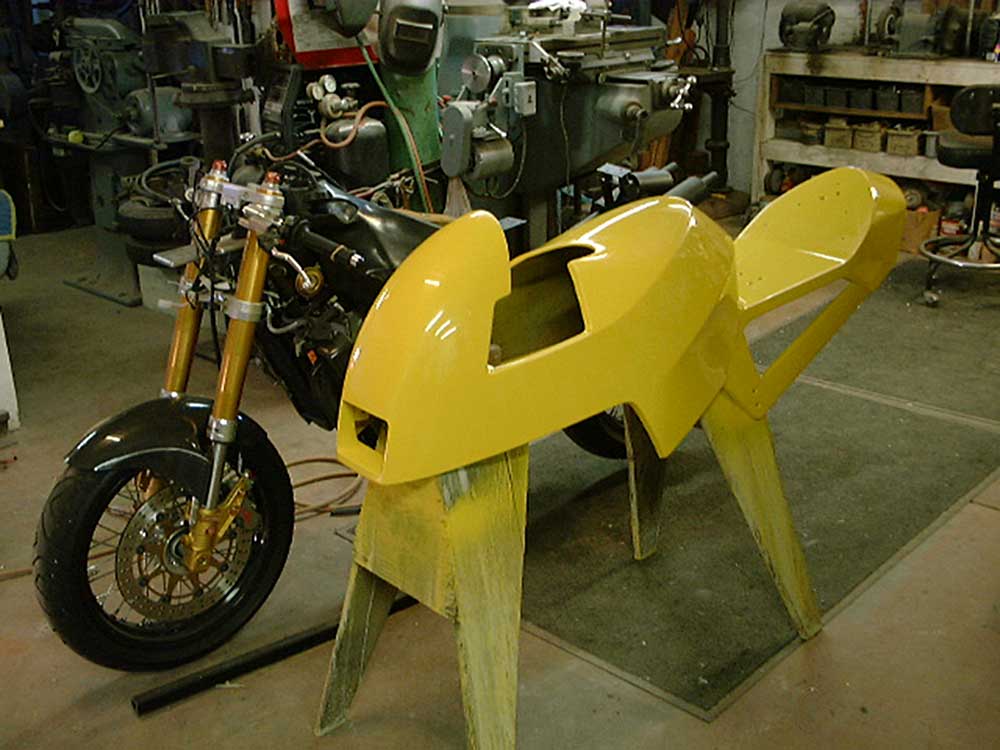
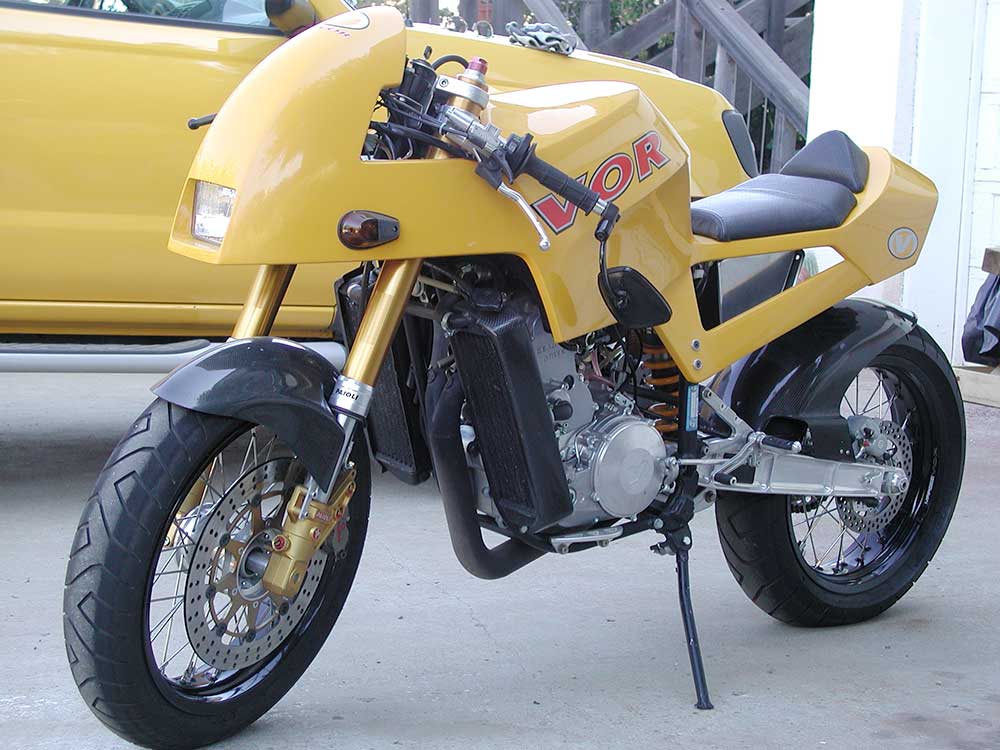
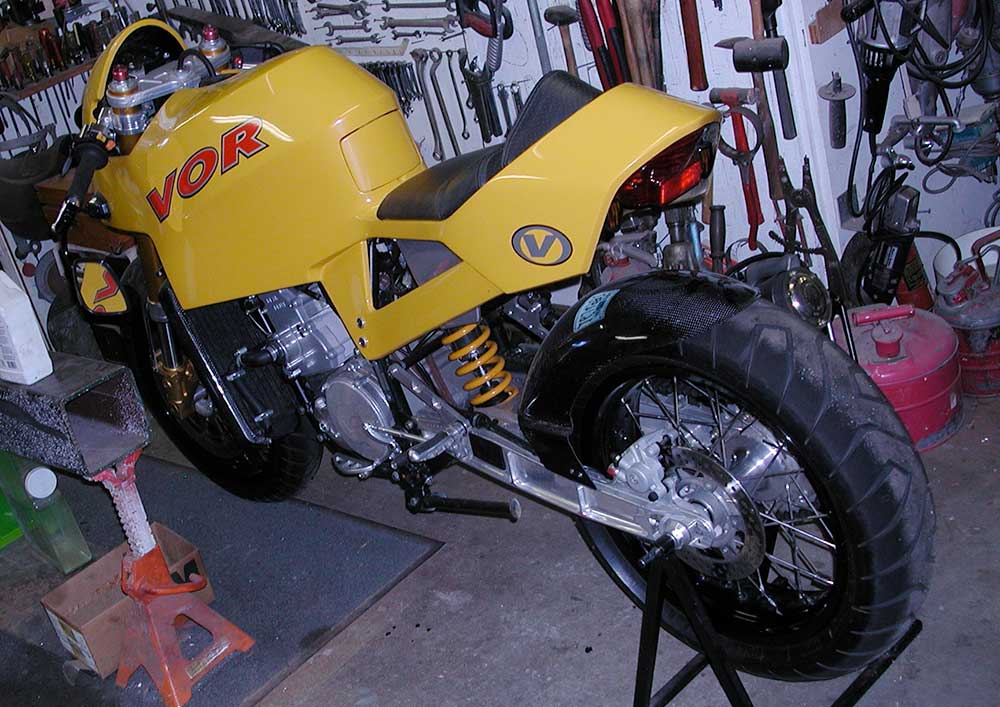
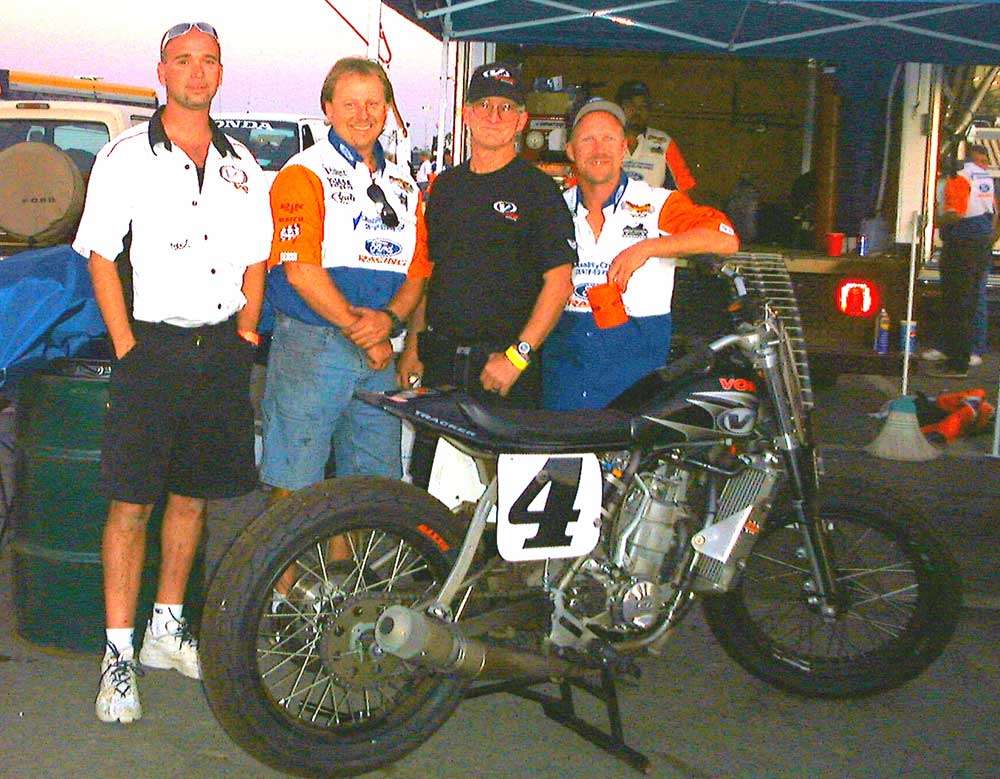
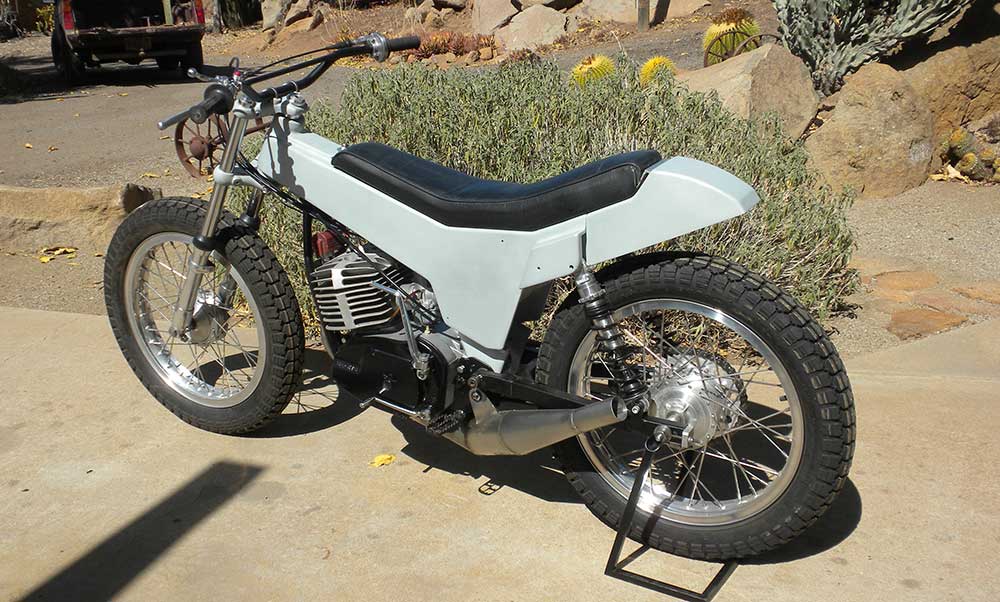
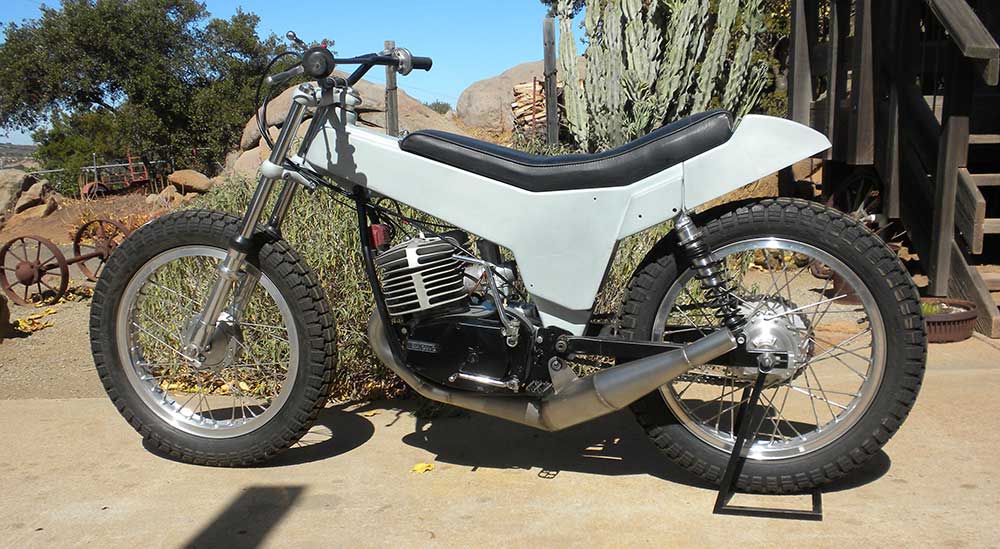
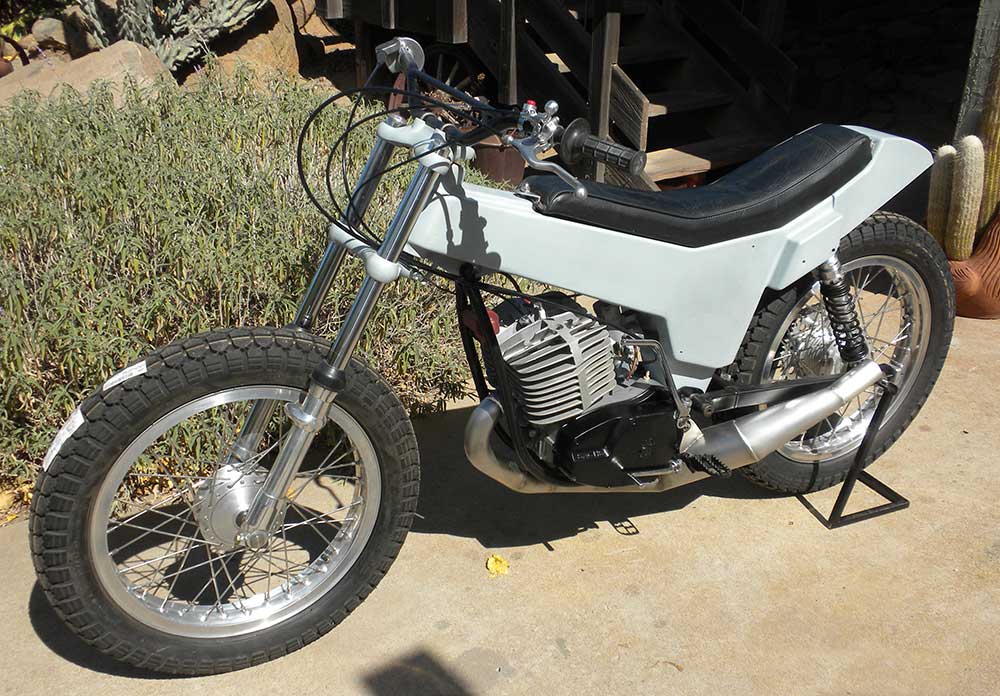
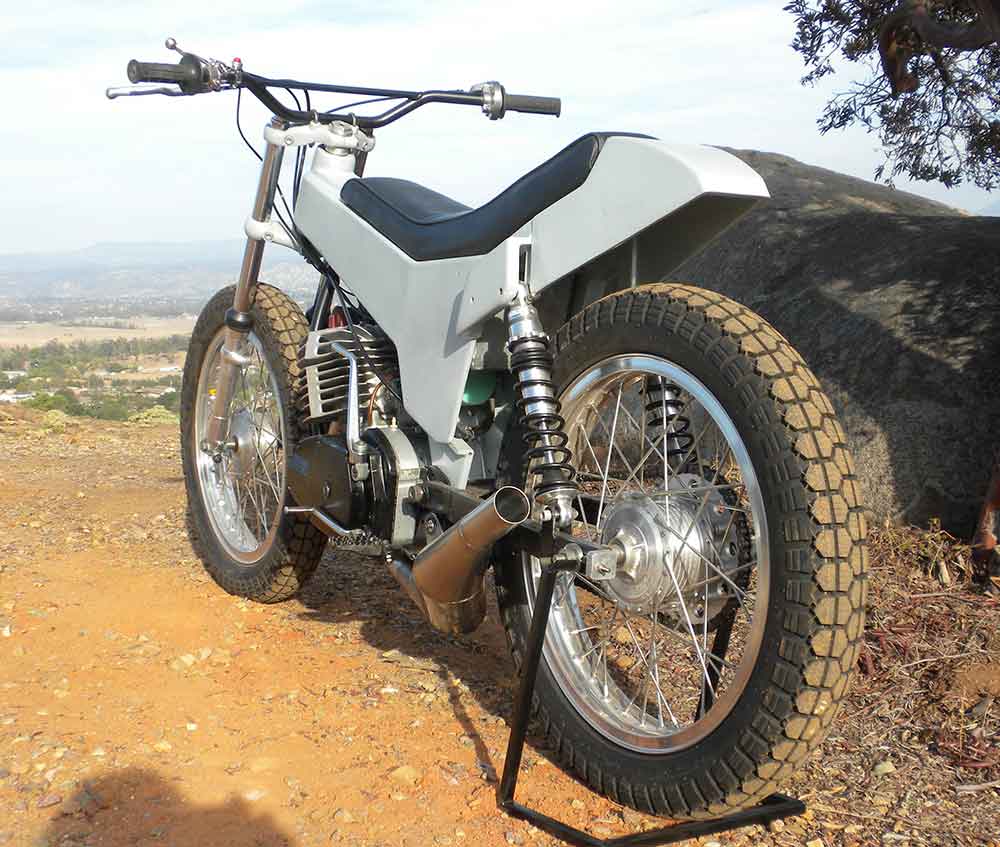
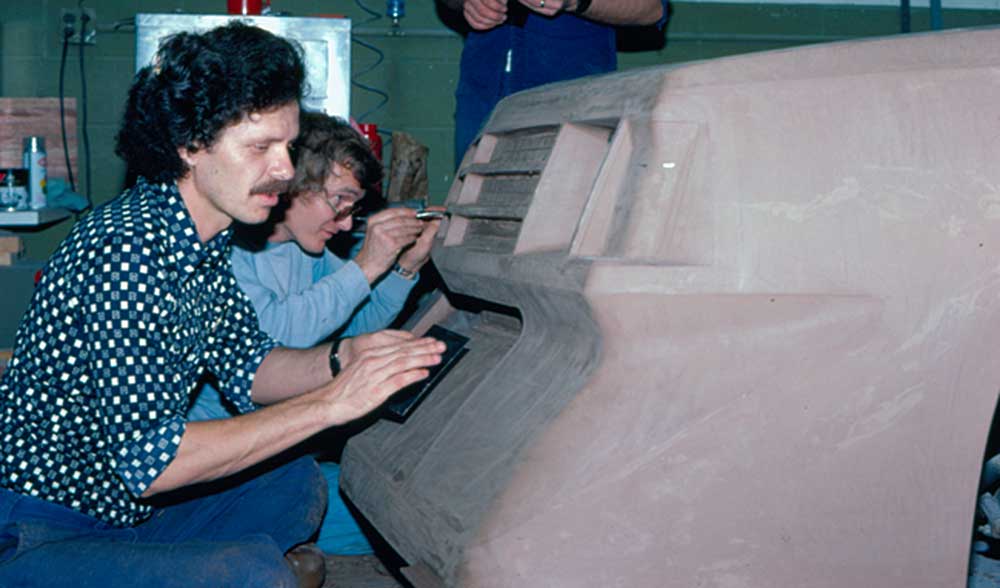
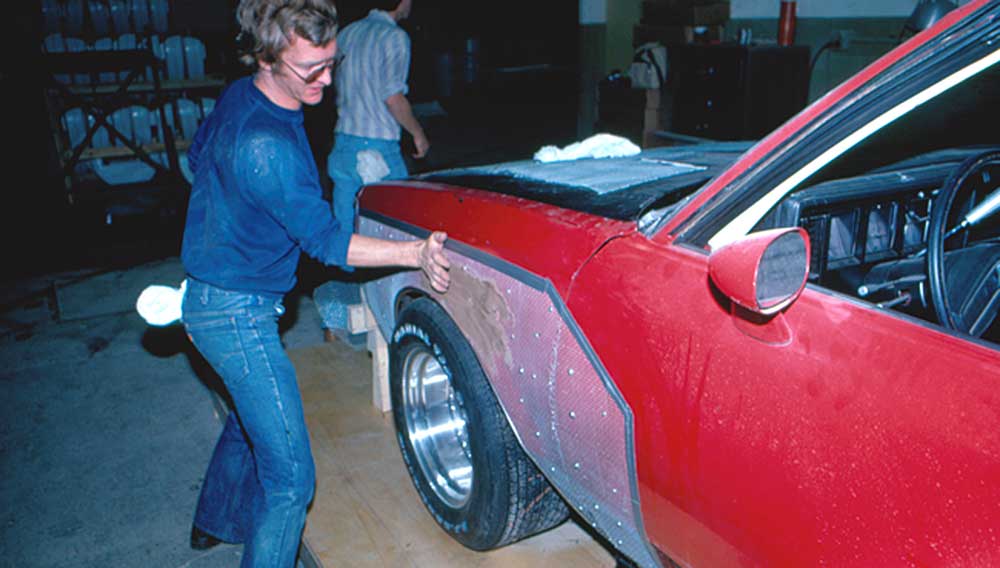
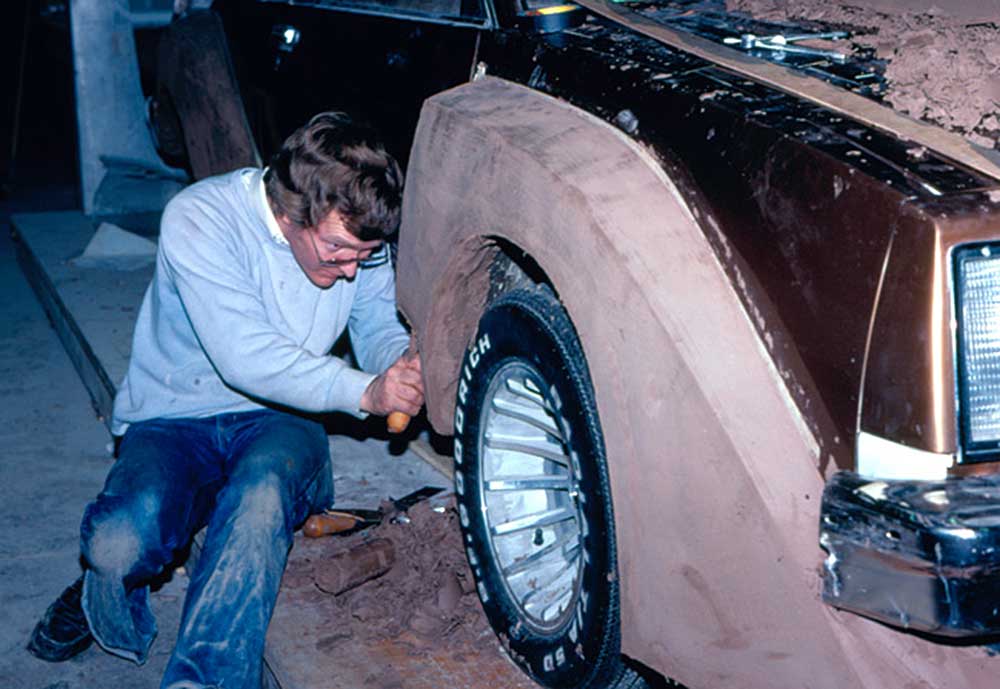
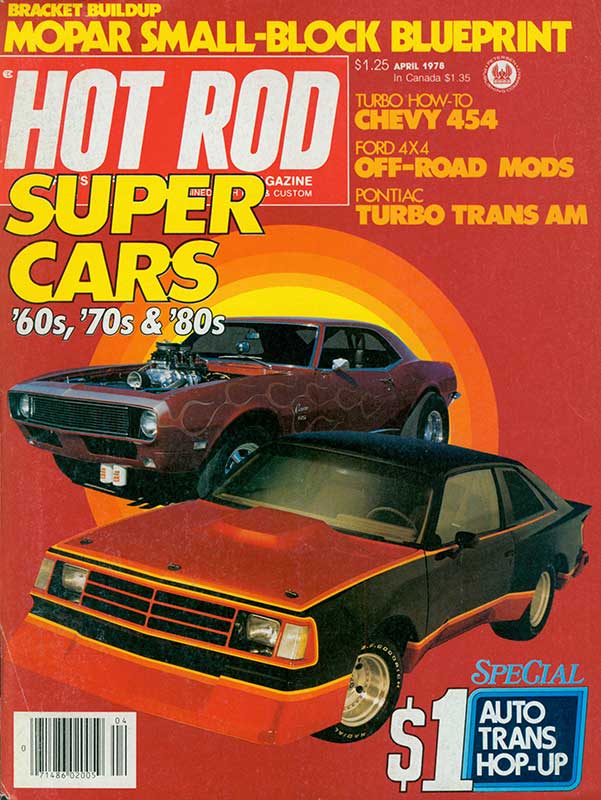
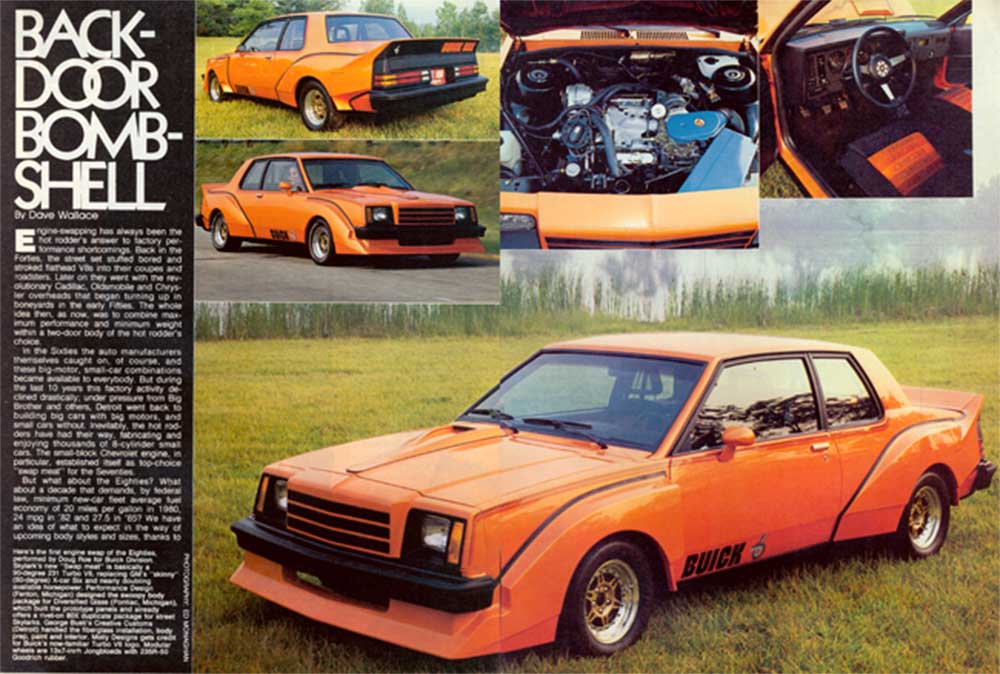
I remember having lots of fun riding dirt bikes with Larry and Karl Kendal – I bet he still walks with a limp from a crash he had back in those days. Nice review here Gary, and I’m glad to see he’s still cookin’.
Cheers Larry,
Clark Lincoln
BTW – I am just finishing up my first road bike – a Cafe Racer style Yamaha. – Probably be limping myself sometime before I die…
There is the old saying that behind every great man there is a great woman. Well, behind every great designer there is a great modeler / sculptor. Larry Brinker is that kind of modeler. A small two dimensional designers sketch must be interpreted into a full size 3-dimensional product or car design. The modeler must have the same or better skills at creating beautiful line and forms than the designer. I have great respect for good modeler /sculptors. Modelers like Larry can often “save” a bad design with their own design talent and 3-dimensional skills. Its great to see Larry get the exposure and respect that a good sculptor deserves.
In my opinion the modelers never really got the total credit they deserved. Without them the cars would have never come to life. And they worked their ass off!
I have made mention of this in the many talks I have given related to my own career & my work at universities and museums across the country when asked about my experience at GM.
There were many great modelers. One of the best and a good friend was Dave Rossi who did my 3 wheeler when I first began in 1966. And, yes, he did as much or more to make it a memorable design as I did.
Once in awhile Larry and I would pass in the hall and say hello. Although I never had the opportunity to work with Larry, I always did hear great remarks about his extraordinary modeling abilities. They came from both designers and other modelers I worked with and a few who went with Jerry to Nissan.
I can definitely relate to his comments about Jerry’s methods since I worked for him in Pontiac for a few years. He was always keeping the team cranked up. We did have a lot of fun and good times.
I have worked with Larry for many many years and he is one of the most talented automotive sculptors there is. A multi-talented artist and craftsman with a deep intellectual understanding of design and form – he is the one I would always want on the same team as me.
Allan Flowers
Great article reliving Larry’s accomplishments. My father (Karl Kendall) still is alive and is innovative as can be. He misses the modeling but still is very proud to have worked with many of you talented souls. I am working on a website to really showcase his talents. Contact me if you want to get in contact with him.